Warm wood grains, handmade details, and time-tested joinery give a Craftsman kitchen its honest, welcoming soul. Yet 2025’s revival of Arts-and-Crafts values is pairing those century-old principles with subtle color trends, smarter storage, and discreet technology to create rooms that feel both heirloom-rich and ready for everyday cooking. Below you’ll find twenty focused ideas—each a stand-alone upgrade—that celebrate craftsmanship, natural materials, and functional beauty. Use one as a weekend project or weave several together for a cohesive remodel; every suggestion explains the benefit, offers a practical tip, and keeps the spotlight firmly on the enduring character of a Craftsman kitchen. Enjoy exploring.
1. Quarter-Sawn Oak Cabinetry Grounds the Craftsman Kitchen
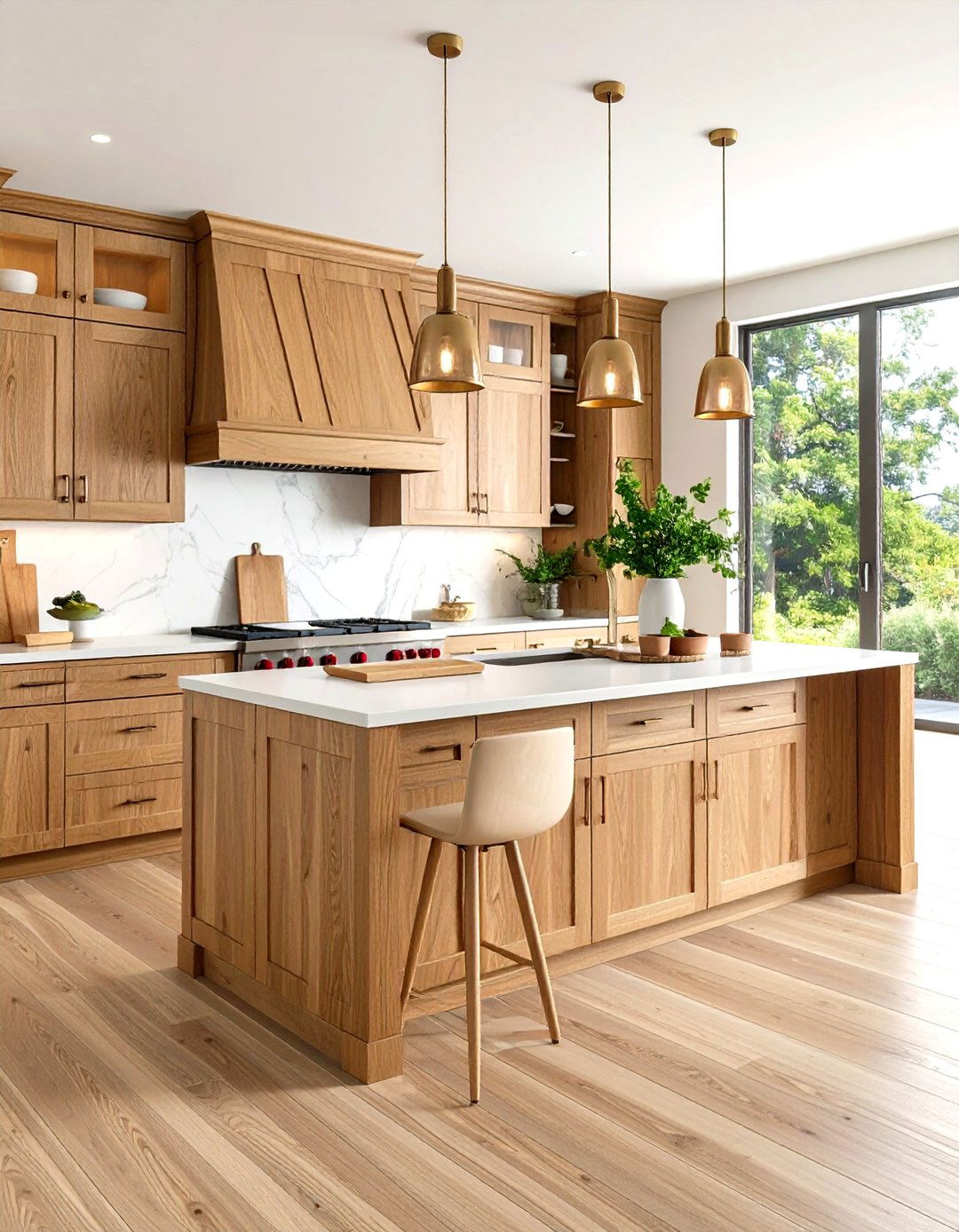
A single glance at quarter-sawn oak instantly signals authenticity in a Craftsman kitchen. The milling method reveals dramatic ray-fleck patterns while resisting warping, so cabinets stay straight for decades. Opt for a warm fumed finish to highlight those medullary rays, then pair the doors with flat center panels and understated stile-and-rail profiles. Interior pull-out trays make the vintage look work hard for modern cooks. If budget limits full custom work, consider using quarter-sawn veneer on visible fronts and sturdier, less costly hardwood for boxes—it keeps the grain continuous without inflating costs. Corbels or simple cove crown add period detail without visual clutter. Simpson Cabinetry
2. Earth-Toned Color Palettes Evoke the Movement’s Nature Roots
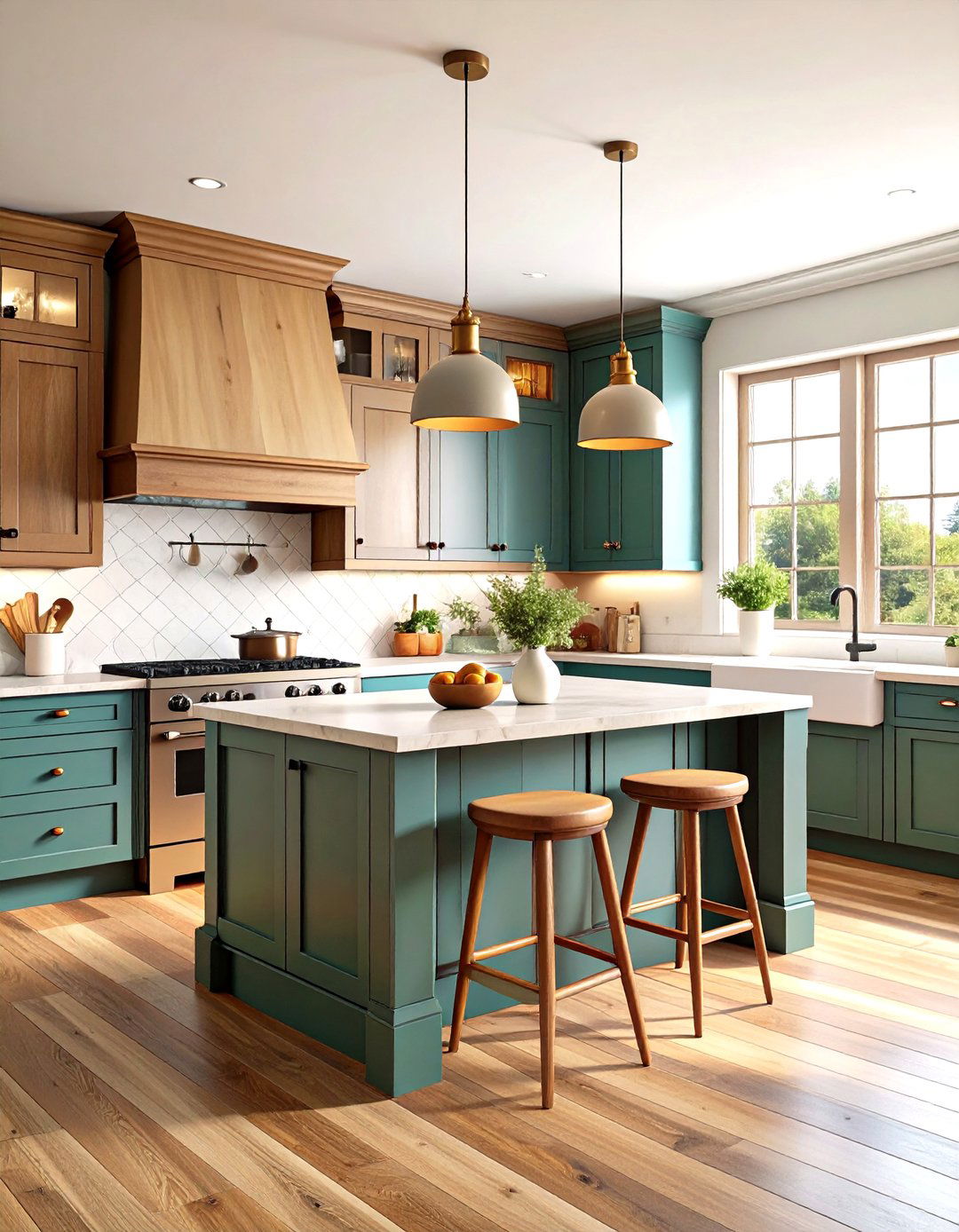
The Arts-and-Crafts movement prized hues drawn from forest and field—think russet, olive, ochre, and stormy teal. Contemporary designers still follow that lead, layering muted, earthy shades against rich wood to prevent heaviness. Try painting the island in a mossy green or russet clay while leaving surrounding oak cabinets natural; the contrast feels grounded yet lively. Finish walls in a warm stone white to bounce light across wood grain. Sampling paint in daylight and evening conditions is critical; Craftsman hues shift subtly with sun angles. Soft terracotta or deep slate tiles underfoot complete the palette while hiding daily scuffs with grace. Homes & Gardens
3. Soapstone Countertops Offer Authentic Contrast and Low Shine
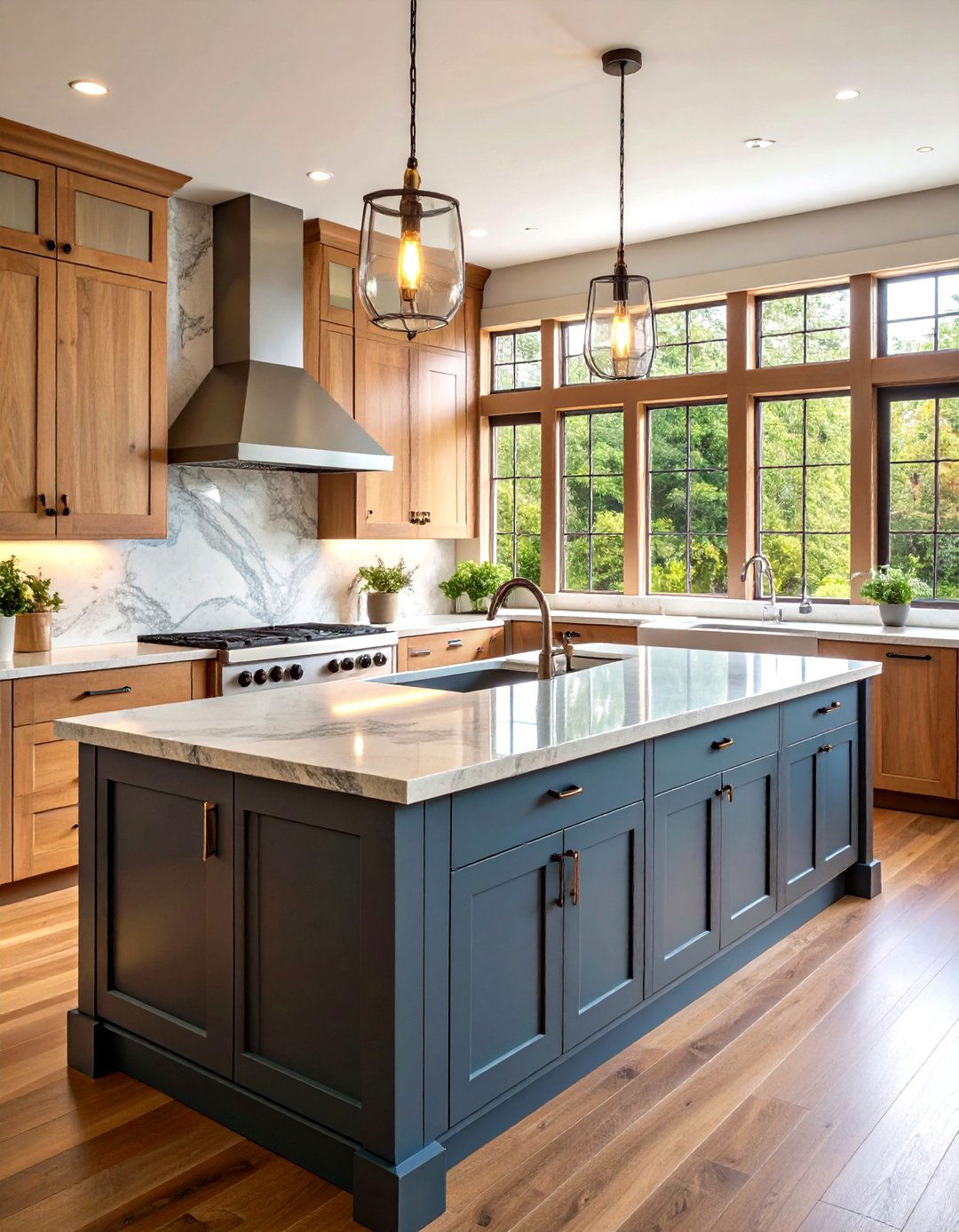
Soapstone’s quiet charcoal surface provides a gentle, matte counterpoint to glowing oak cabinets, a combination seen in countless period kitchens. The stone is non-porous and withstands hot pans, so you can slide a Dutch oven from stove to surface without fear. Choose slabs with delicate white veining for subtle movement; mineral-oil them monthly to enrich color or leave them untreated for a lighter graphite gray. Although soapstone can nick, shallow scratches patinate into a soft leather-like finish that many homeowners love. Integrate an apron-front seam at the sink for a visually seamless work zone that echoes handcrafted integrity. Houzz
4. Hand-Glazed Tile Backsplashes Celebrate Maker’s Marks
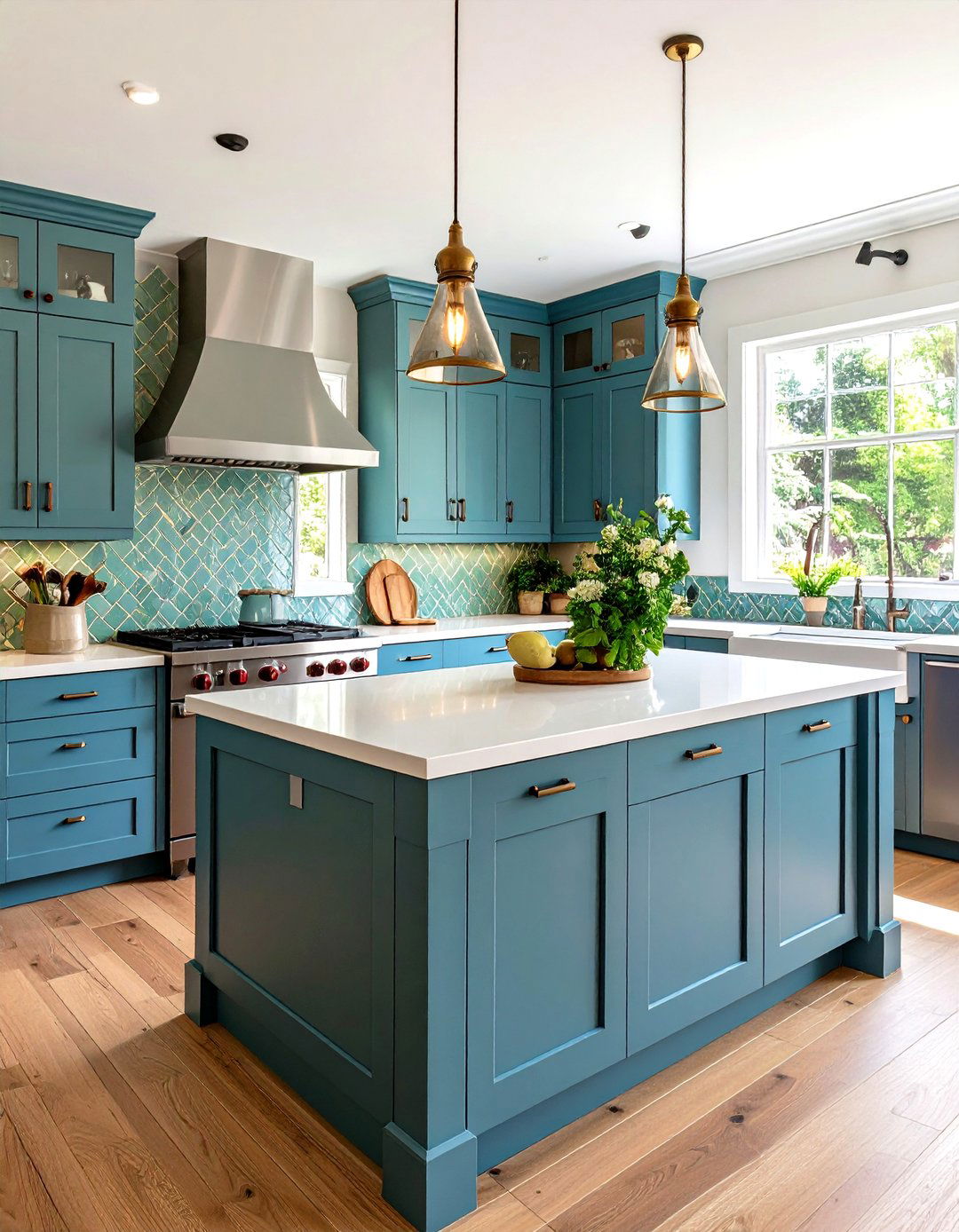
Hand-glazed Craftsman tiles—often in earthy greens or denim blues—add brush-stroke character impossible to replicate with mass-produced subway tile. Arrange 4×4s in a simple running bond or mix 2×4 and 4×4 squares for a prairie-inspired grid. Slight thickness variations cast lively shadows when under-cabinet lights hit the undulating surface. Ask the tile maker for a coordinating bullnose or quarter-round trim; crisp edges elevate a field of rustic glaze. Because each piece varies subtly, dry-lay the pattern on a tabletop first to balance tone shifts before it’s mortared to the wall. Seal grout in high-steam cooking zones to keep joints pristine. Fireclay Tile
5. Mission-Style Amber-Mica Pendants Cast a Cozy Glow
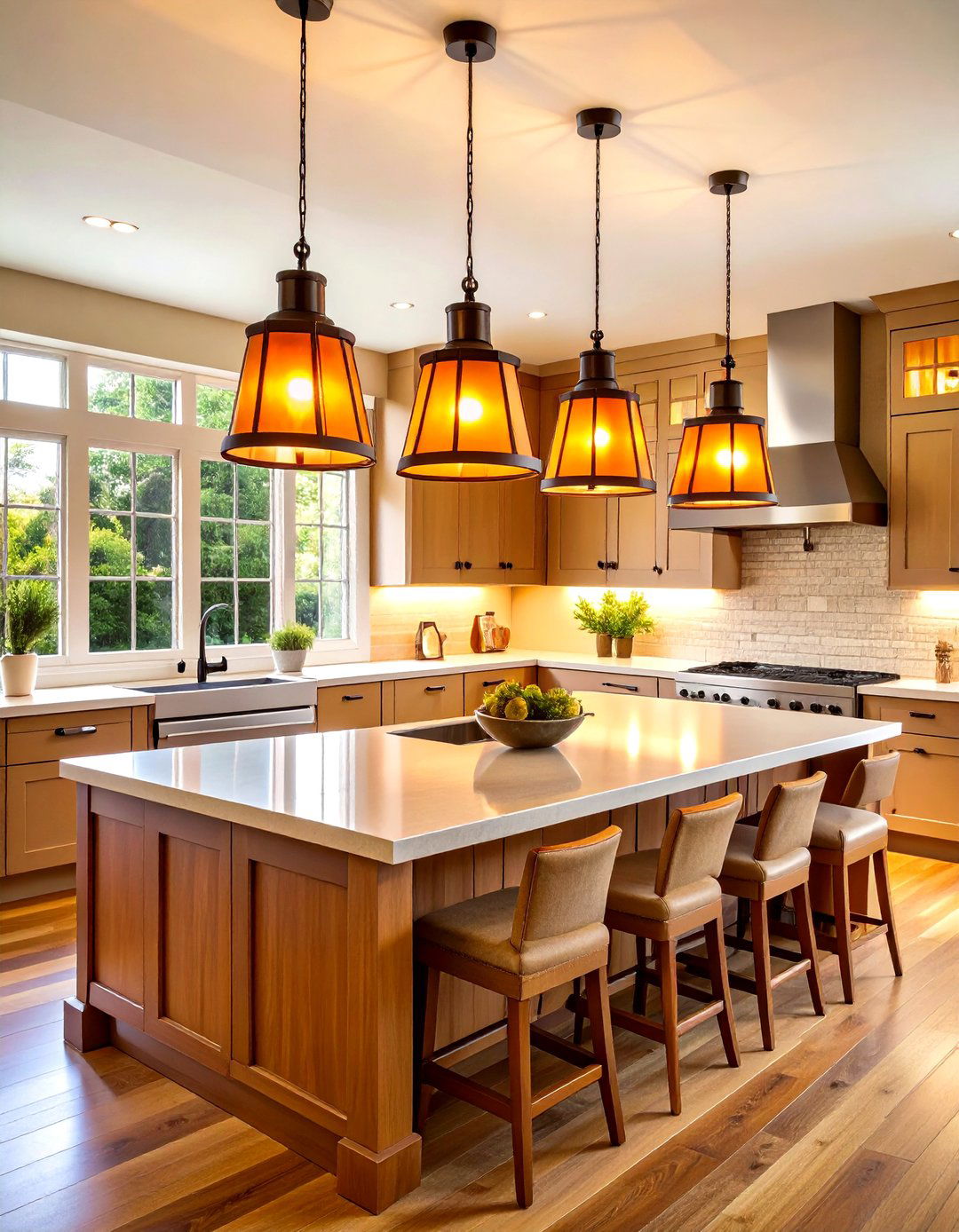
Soft amber mica shades framed in rectilinear bronze or copper fill a Craftsman kitchen with warm, camp-fire light while echoing the movement’s affection for honest minerals. Position a trio over the island at eye level so the amber glow illuminates tasks without glare. Look for pendants that allow field-cut cord lengths; correct height keeps sight lines open to surrounding built-ins. Pair overhead fixtures with matching wall sconces near the breakfast nook for cohesive rhythm. Dimmable LED Edison bulbs deliver vintage ambience without heat or high energy use—just confirm the Kelvin rating stays below 2700K to preserve that signature warmth. Wayfair
6. Built-In Breakfast Nooks Invite Slow Mornings
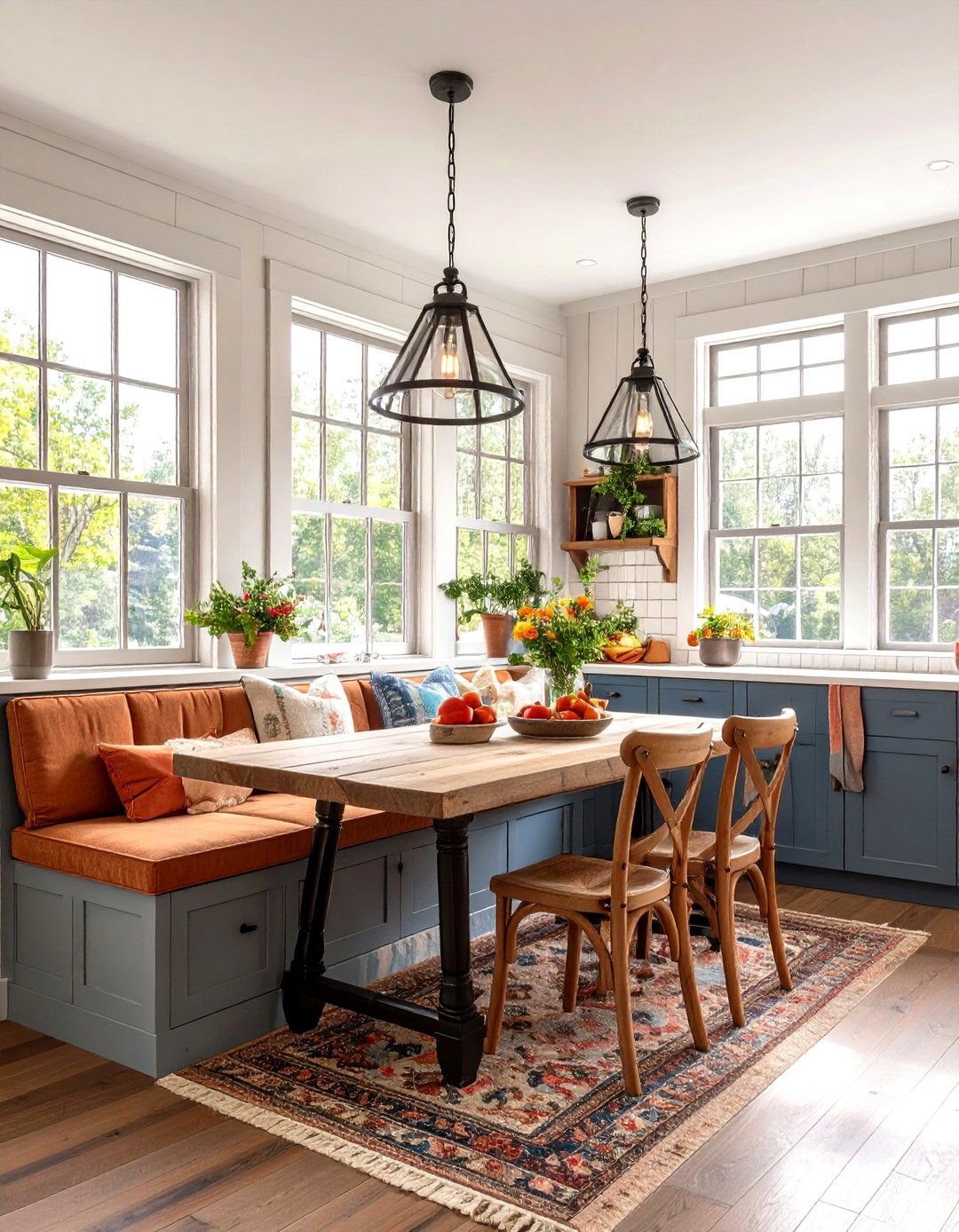
Nothing says “welcome” like a built-in nook tucked beneath sun-washed windows. Craft a U-shaped bench with mid-height wainscoting that mirrors cabinet panels, then top seats with lift-up lids for hidden storage—perfect for placemats or board games. A slim trestle table keeps knees comfortable in tight corners, and vintage-style iron sconces free tabletop space. If your Craftsman kitchen runs narrow, consider a single bench plus companion chairs opposite. Upholster cushions in botanical prints to echo Arts-and-Crafts textiles without venturing into busy Victorian florals. Even modest homes gain a true hearth-like gathering spot from this timeless carpentry. Architectural Digest
7. Leaded-Glass Cabinet Doors Add Sparkle and Depth
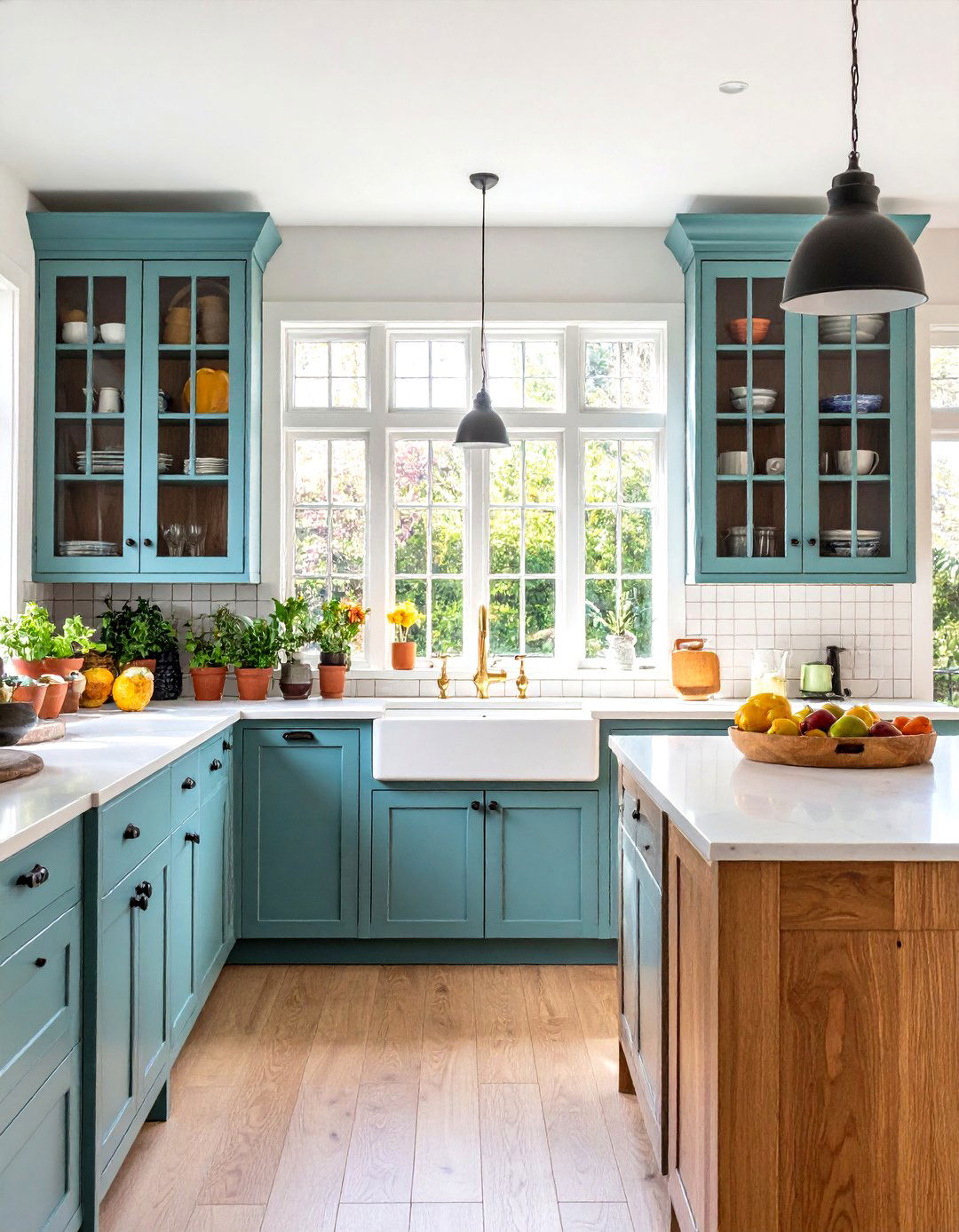
Stripy oak and soapstone read beautifully matte; introduce a little shimmer with leaded-glass uppers. Simple geometric muntins in clear or lightly seedy glass echo original bungalow windows while letting you spotlight handmade ceramics inside. Swap a few standard doors for glass rather than glazing every unit—selective placement avoids busy views of pantry staples and preserves cleaning ease. Install dimmable LED puck lights inside the cabinet to make the glass gleam at night, doubling as ambient lighting for gatherings. Factory-made inserts can retrofit existing doors, giving a quick upgrade without altering cherished cabinet boxes. WalzCraft
8. Tapered Wood Range Hoods Create a Quiet Focal Point
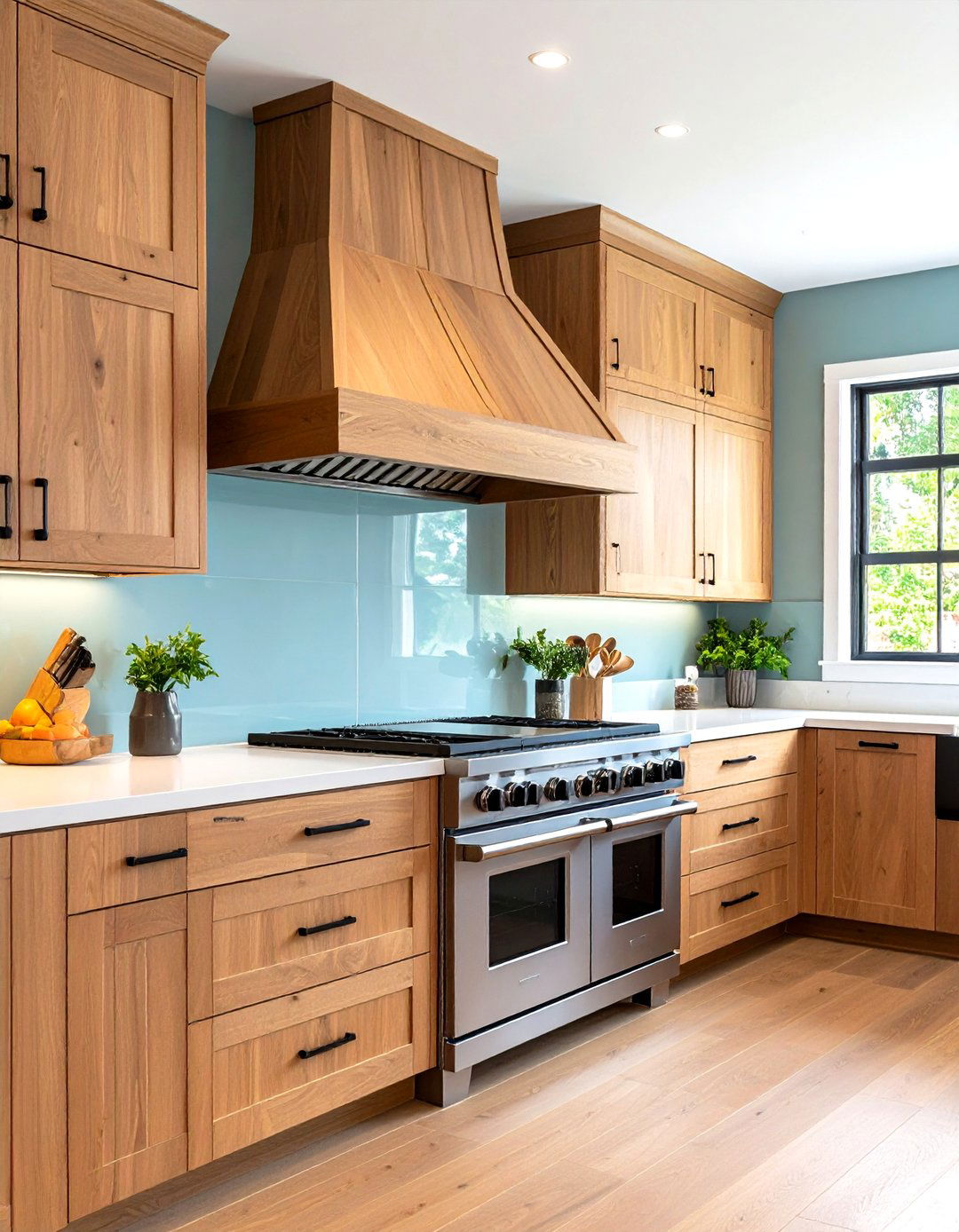
Craftsman kitchens rarely flaunted shiny metal chimneys; instead, they framed cooktops with subtle, furniture-like hoods. A hood box that tapers gently upward and repeats cabinet stile widths feels integrated rather than tacked on. Stain it to match nearby doors or paint it to contrast the island for soft emphasis. Underneath, choose a high-CFM insert with dishwasher-safe baffles so cooking feels as effortless as the look. Consider adding slim display ledges on the hood’s face for small copper pots or art tile medallions—functional ventilation meets curated craftsmanship.
9. Inset Shaker Doors Showcase Fine Joinery
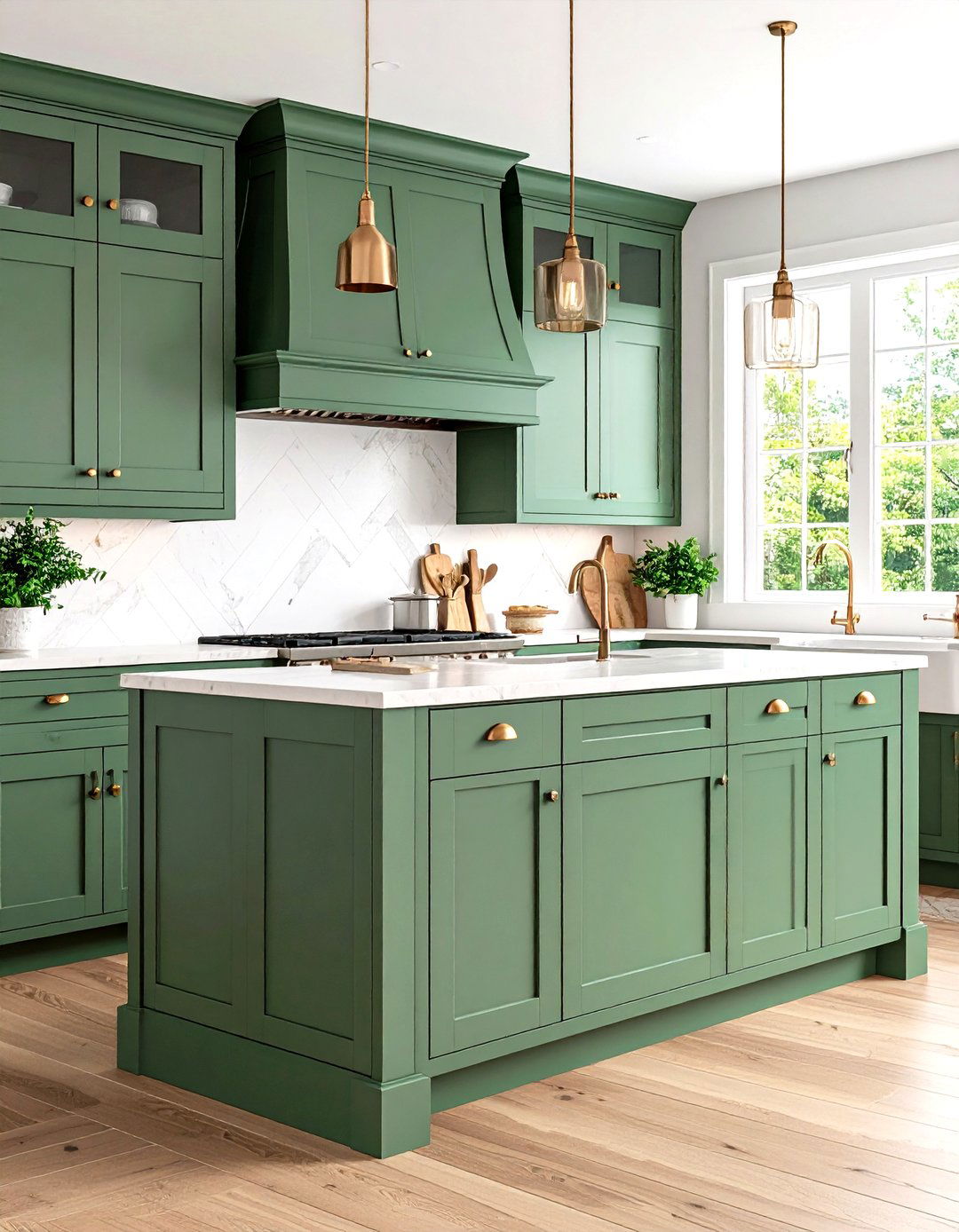
Inset Shaker doors—where the face sits flush within the frame—highlight precise craftsmanship that stands out in a Craftsman kitchen. Though the design looks simple, the 1⁄16-inch reveals around each door demand skilled carpentry, signaling quality at first glance. Soft-close hinges maintain that tidy reveal and prevent frame dings. If you love tone variation, combine natural quartersawn oak bases with painted Shaker uppers for visual lift. To keep expansion gaps consistent in humid climates, ask your cabinetmaker for engineered panels or splined construction—modern tweaks that protect the classic aesthetic from seasonal swelling. Houzz
10. Butter-Yellow Accents Bring Gentle Cheer
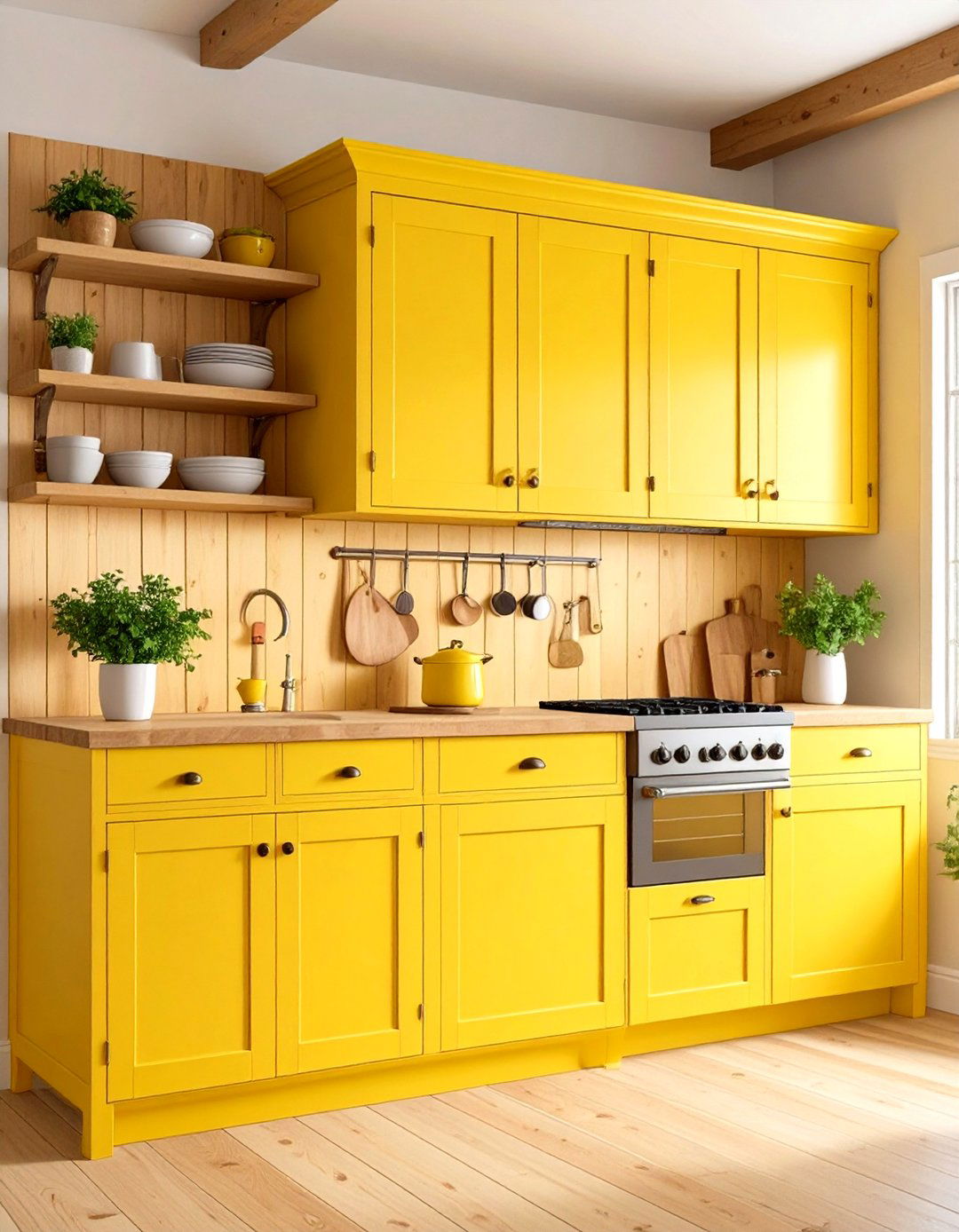
While wood tones dominate, a whisper of color can brighten the room. Designers predict the “butter yellow” trend—soft, nostalgic, and warmer than white—will remain a favorite into 2026. Paint a pantry door, small prep hutch, or inside open plate racks this mellow hue to catch morning light without overpowering the palette. Yellow pairs effortlessly with bronze hardware and the green-gray undertones of soapstone, reinforcing a sun-lit, lived-in feel. Because pale yellows shift with lighting, sample several shades on poster board and observe them through the day before committing brush to wood. Homes & Gardens
11. Exposed Ceiling Beams Anchor Vertical Volume
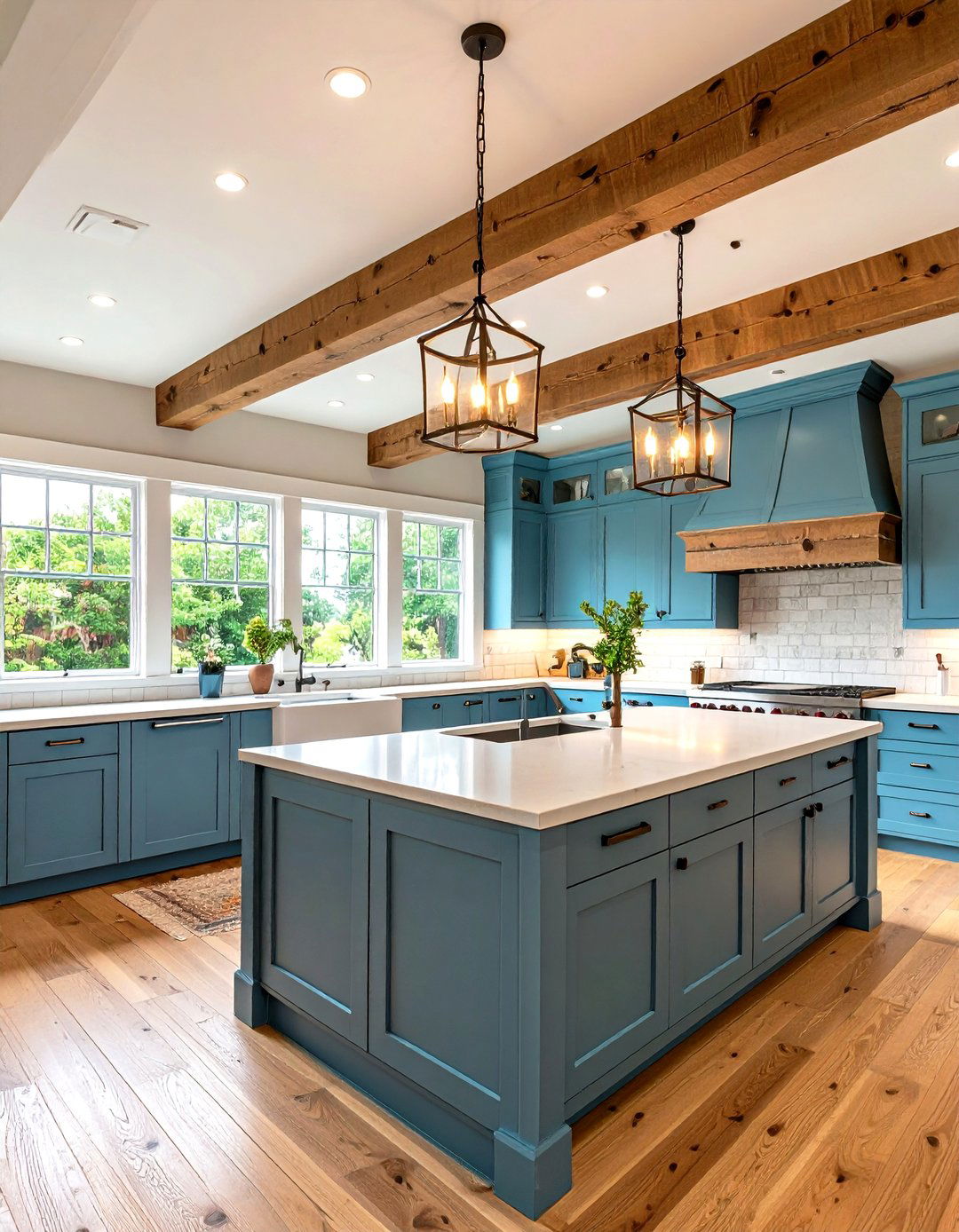
Adding or revealing ceiling beams underscores the structural honesty prized by Craftsman builders. Even lightweight faux beams stained to match cabinetry trick the eye into thinking timbers run through the house, lending intimacy to soaring ceilings. Use them to conceal wiring for pendant drops or LED accent strips, keeping technology hidden. Align beam spacing with island edges and range centers for harmonious rhythm. If your kitchen already has drywall soffits, overlaying slim beam wraps can deliver the look without demolition. A soft wax finish rather than polyurethane preserves the tactile warmth of real wood overhead. Architectural Digest
12. Open Plate Racks Showcase Everyday Ceramics
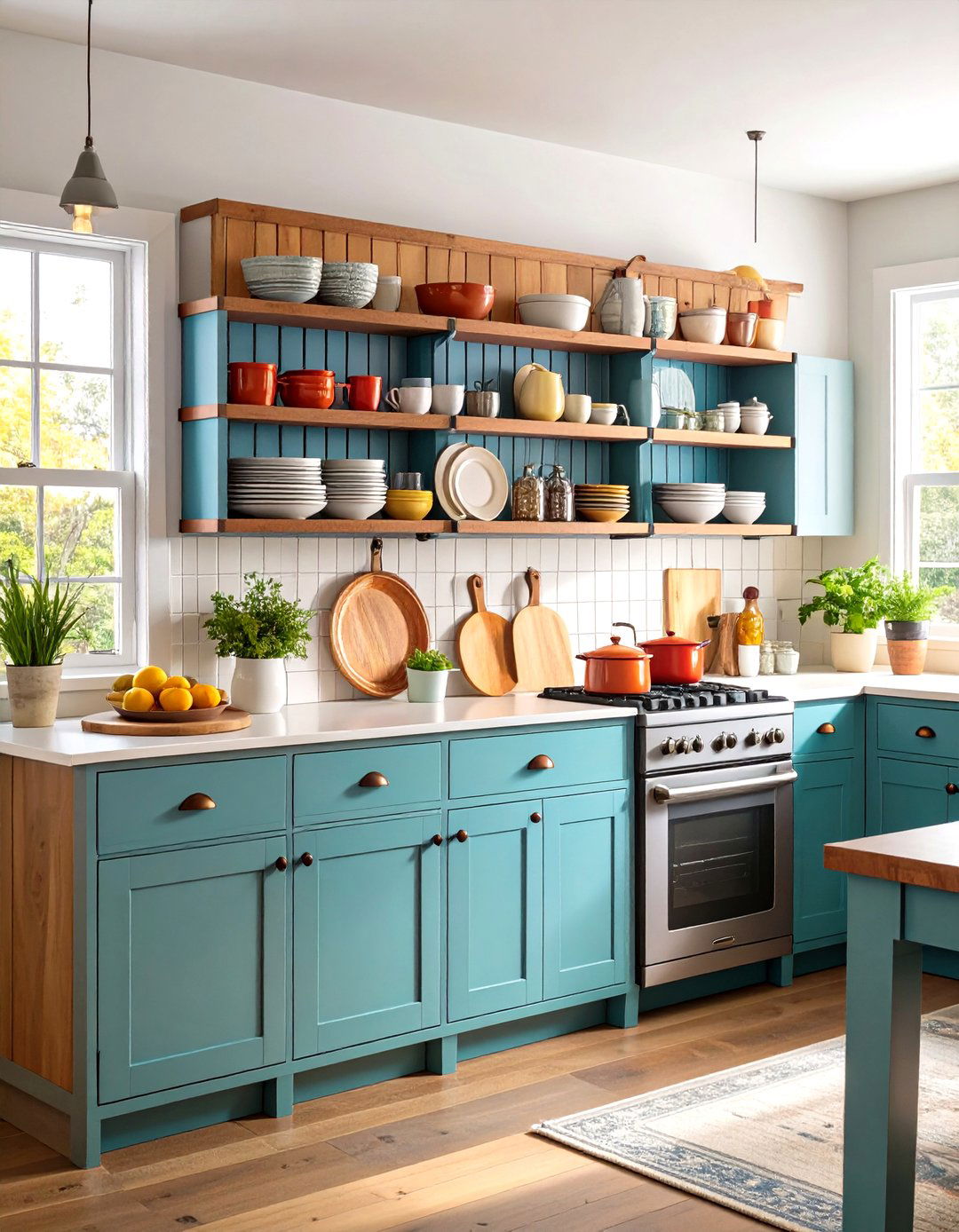
Unlike closed cupboards, a vertical slat plate rack lets you treat dinnerware as usable art—the perfect Craftsman blend of utility and beauty. Build one between two uppers or as a stand-alone wall shelf; spacing slats one inch wider than your largest plates prevents wedging. Paint the rack’s back in a complementary accent color so pale stoneware pops against oak. Keep dust off with weekly use; rotating dishes into daily service naturally cleans them. If you worry about quake zones or toddlers, install a discreet dowel lip at the front edge for extra security without spoiling the open look. Pinterest
13. Oil-Rubbed Bronze Hardware Adds Subtle Depth
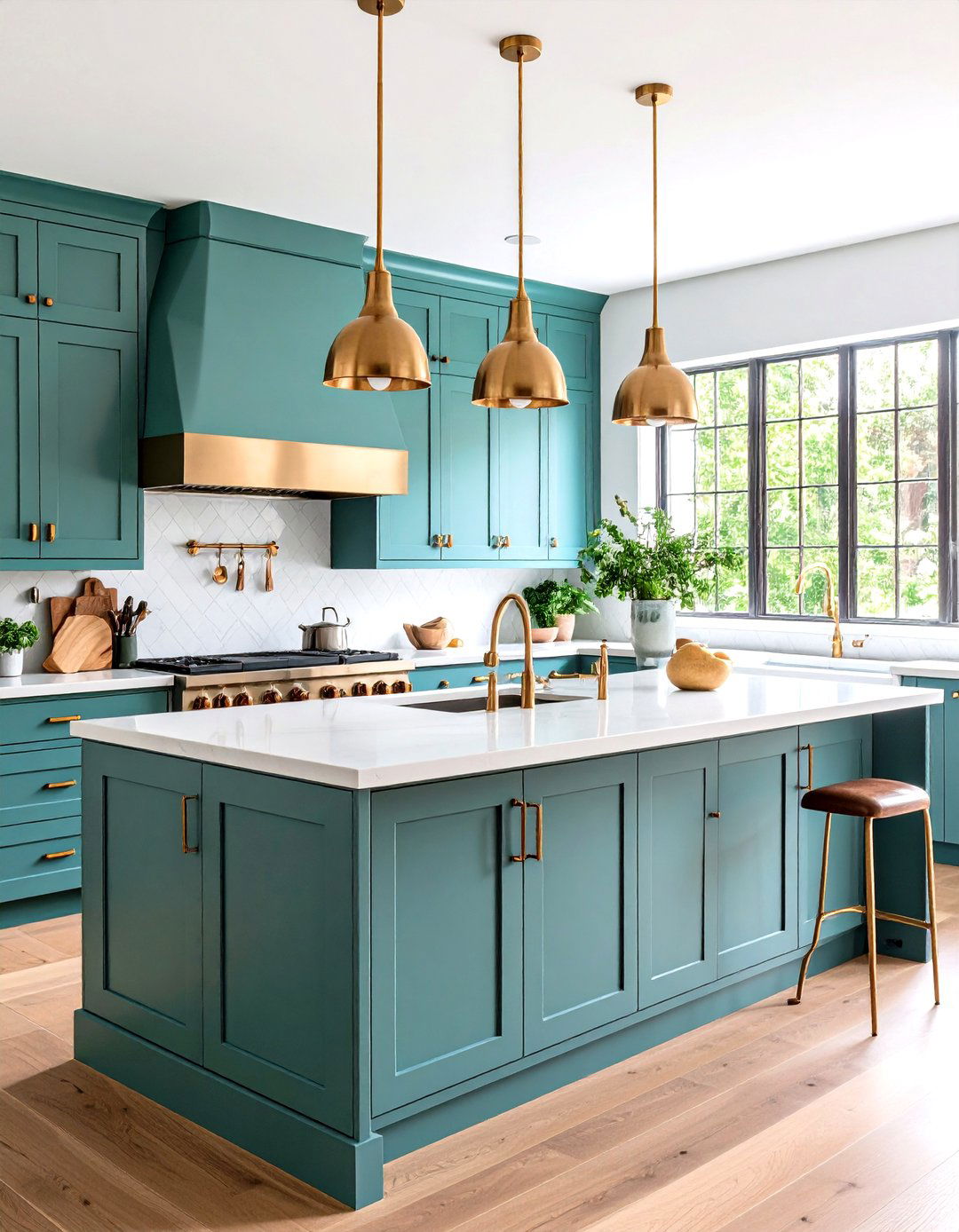
Hardware is the jewelry of a Craftsman kitchen, and oil-rubbed bronze’s living finish darkens gracefully with touch. Straight bar pulls or pyramid-headed knobs nod to Mission styling without the fuss of high Victorian curves. Mix sizes: longer pulls on pantry drawers, smaller knobs on spice units. For a custom feel, align screw holes with rail widths, and use backplates only where heavy use warrants extra protection. Period interiors often mixed metals, so pairing bronze with matte black hinges or hammered copper pendant chains feels authentic rather than mismatched. Better Homes & Gardens
14. Butcher-Block Islands Encourage Hands-On Cooking
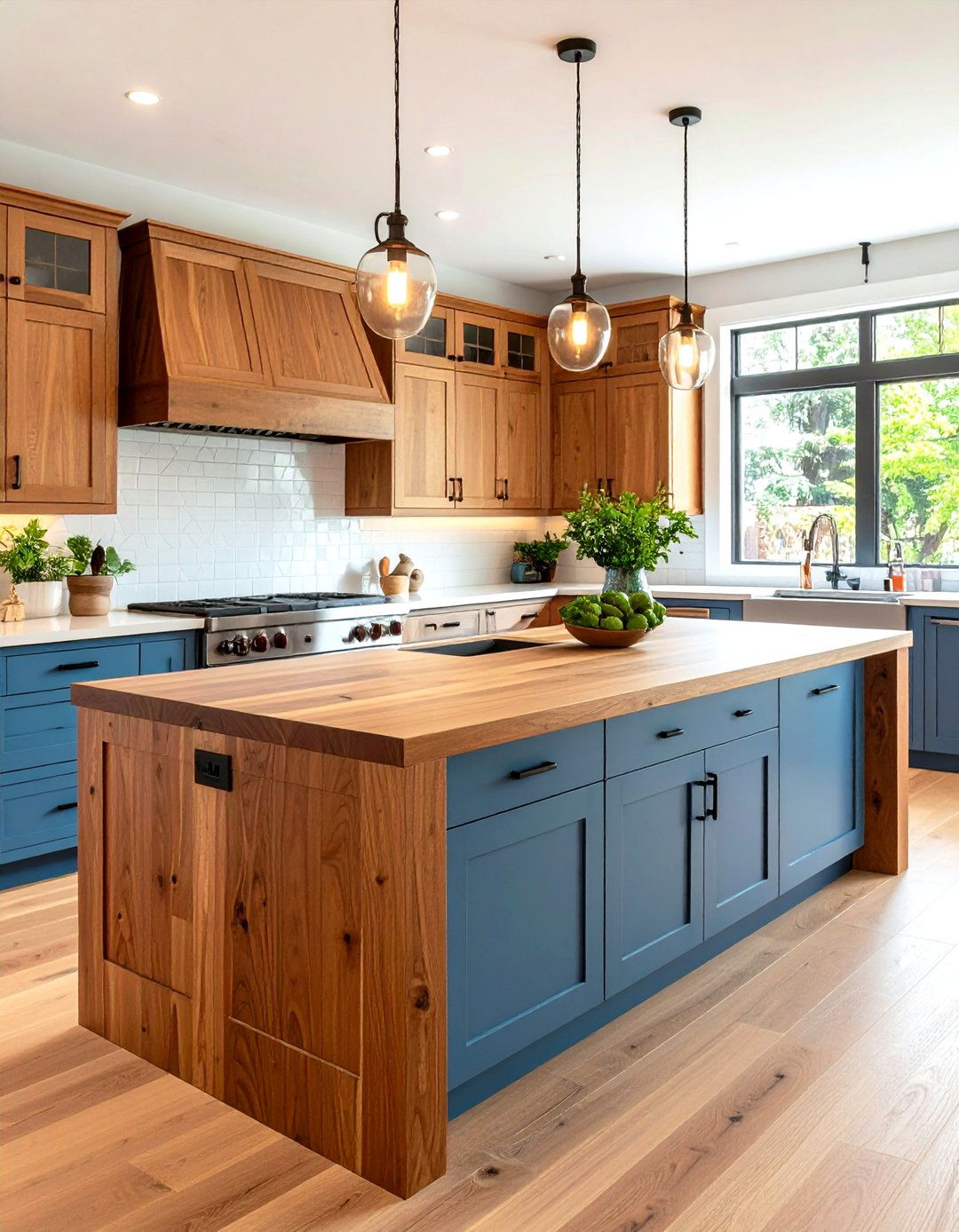
A solid-walnut or hickory butcher-block top turns the island into both prep station and gathering zone. Edge-grain construction balances durability with classic stripe visuals, while a 4-inch thickness evokes vintage chopping tables. Regularly oil the surface with food-safe mineral oil; a well-oiled block naturally resists moisture and microbes. Integrate concealed outlets within corbels beneath the overhang so small appliances stay close at hand. If knife scars bother you, designate one end for heavy chopping and the rest for serving—annual sanding keeps the whole top fresh. Houzz
15. Bracket-Style Corbels Provide Subtle Ornament
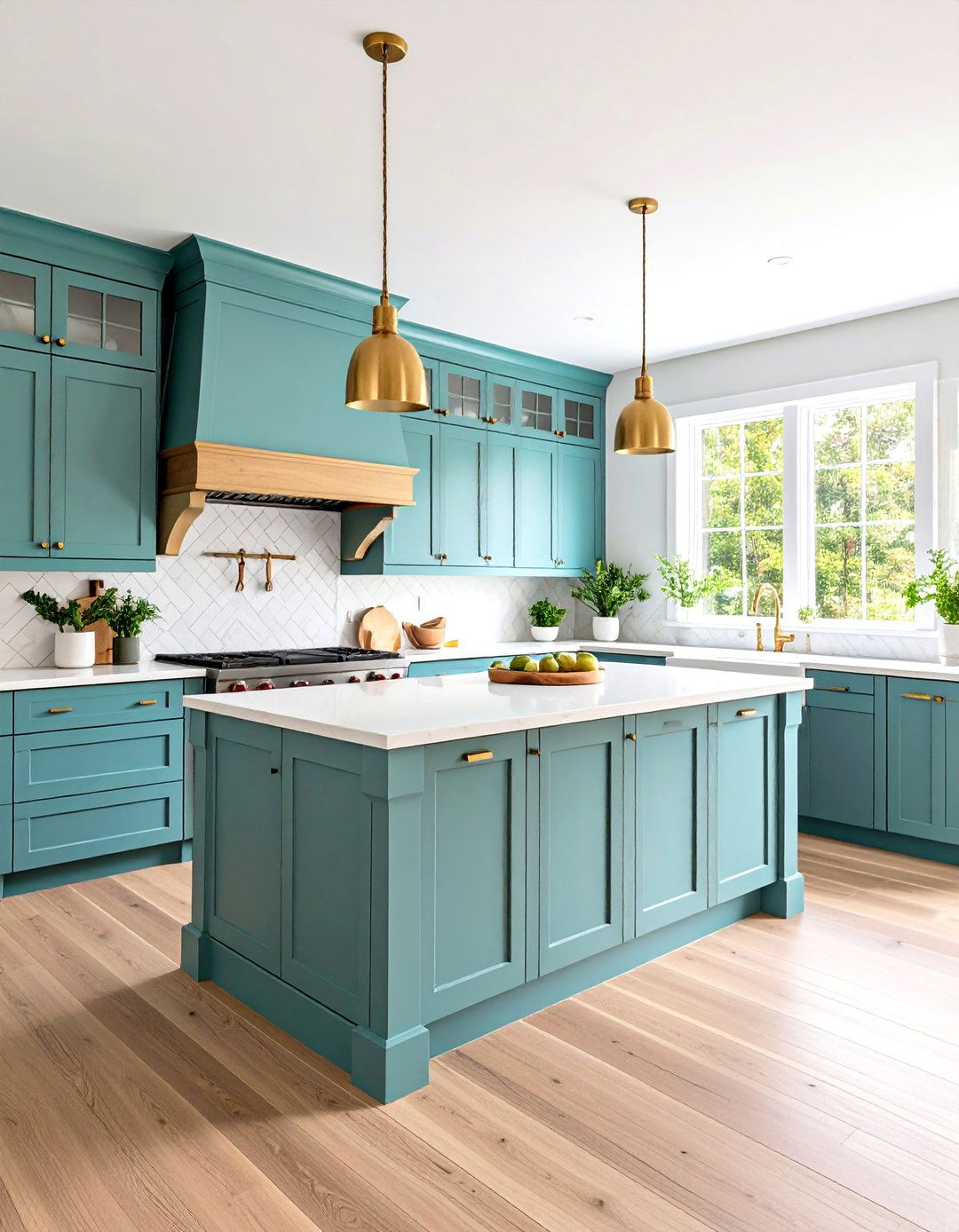
Simple corbels beneath upper cabinets or island overhangs lend structural authenticity and rhythmic shadow lines. Keep brackets stout—roughly two-thirds the depth of the shelf—but restrain ornament to a single chamfer or gentle curve so the look stays true to Craftsman restraint. Pre-finish brackets before installation to avoid drip lines, and anchor with hidden lag screws through cabinet backs. Corbels also double as clever locations for under-shelf task lights; route a shallow channel on the backside to hide wires before mounting. Simpson Cabinetry
16. Stickley-Inspired Stools Connect Kitchen to Dining

Mission-style bar or counter stools crafted with visible mortise-and-tenon joints bridge the kitchen to adjacent dining spaces. Choose leather-topped seats in rich chestnut for easy wipe-downs, and coordinate stain colors with island wood rather than matching exactly—slight variation feels curated. Stools 24–26 inches high suit standard 36-inch counters; 30-inch heights fit bar tops. Felt pads under legs protect hardwood floors while keeping stools glide-smooth. Period-authentic designs often weigh more than modern imports, so verify floor joists support concentrated loads on cantilevered islands.
17. Fireclay Apron Sinks Offer Durability and Depth
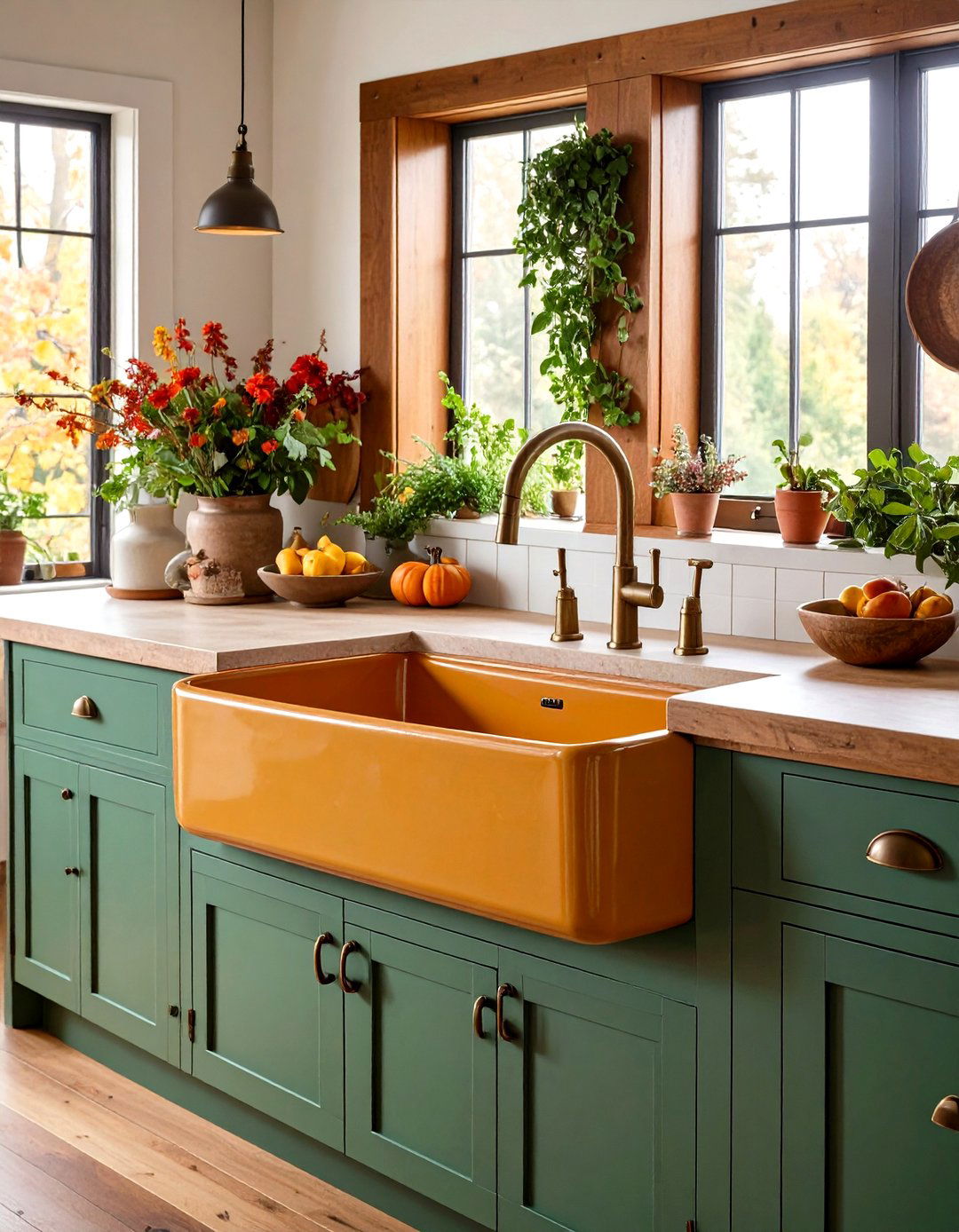
A fireclay apron-front sink blends farmhouse utility with Craftsman substance. Fired at high temperatures, the glaze fuses to the clay body, creating a nonporous, scratch-resistant surface ideal for heavy cast-iron cookware. The generous bowl depth hides dishes below counter line, maintaining tidy sightlines from open living areas. Specify a custom front panel thickness that matches cabinet doors so sink and cabinetry read as one built-in element. For color, classic white remains timeless, but matte black or biscuit shades pair beautifully with dark soapstone and aged bronze fixtures.
18. Stained-Glass Transom Windows Paint the Light
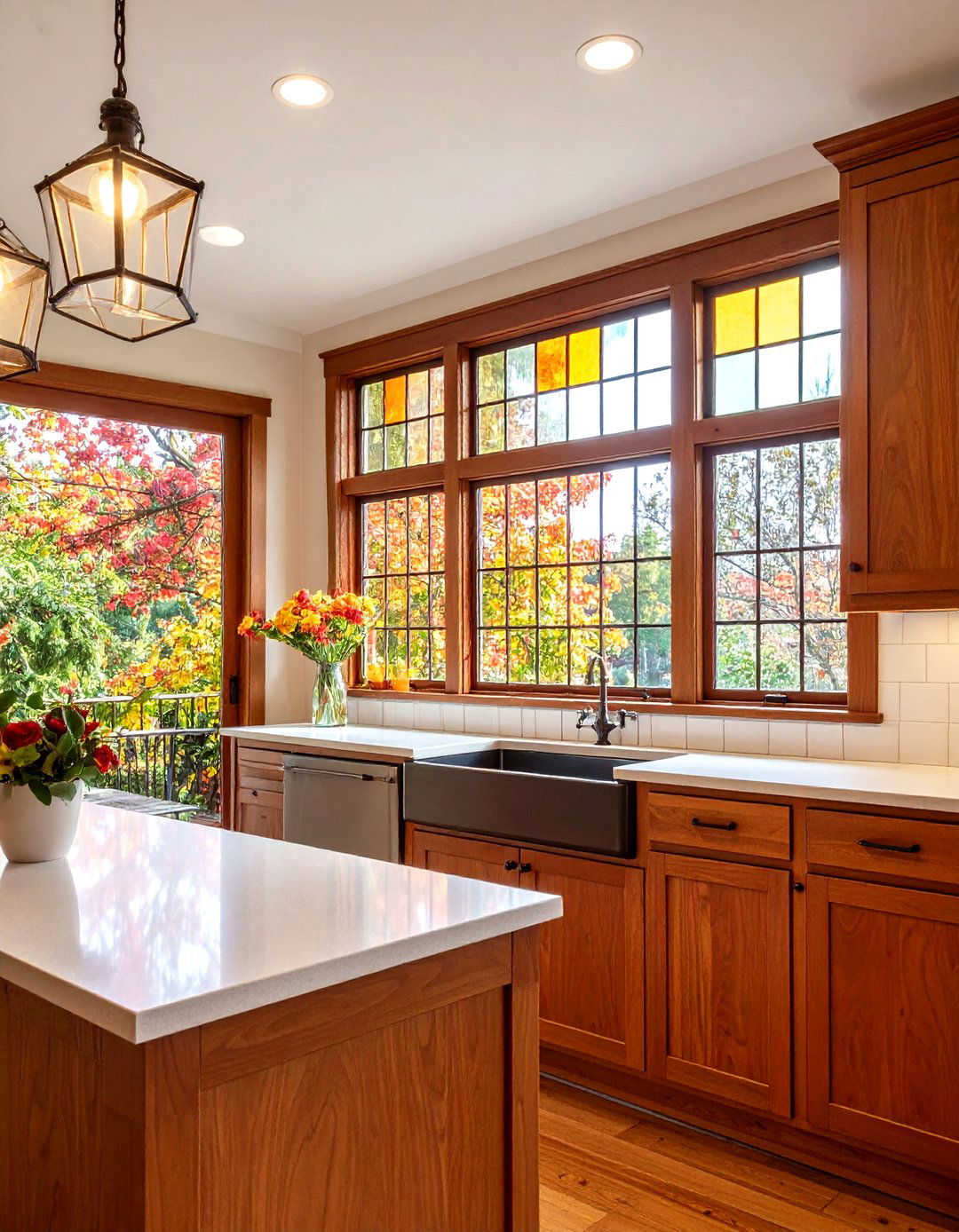
Installing a narrow stained-glass transom above the sink or pantry door lets sunrise hues dance across wood grain each morning. Choose geometric panes in amber and moss green to echo pendant lights and backsplash tones. Because stained glass diffuses harsh glare, it functions like built-in privacy glass without sacrificing daylight. Order insulated triple-pane units for energy efficiency and easier cleaning—modern fabrication techniques meet old-world charm. Position accent colors opposite key work zones so reflections animate the space while you cook. The Spruce
19. Hand-Forged Iron Pot Racks Display Everyday Tools
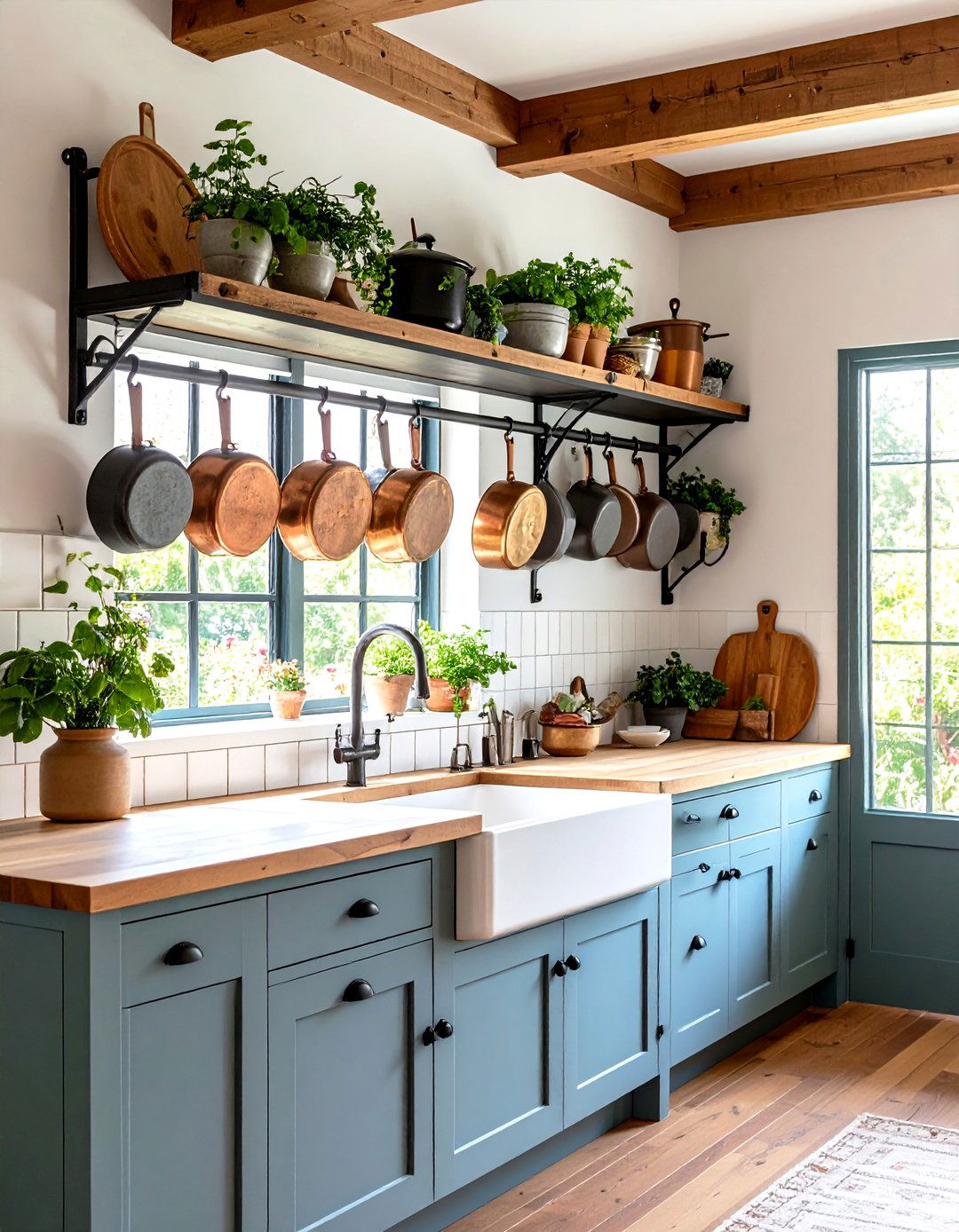
A wall-mounted iron pot rack keeps cast-iron skillets within arm’s reach and underscores the workshop ethos of a Craftsman kitchen. Look for racks with tapered hooks that echo blacksmithing traditions; sturdy bar stock supports Dutch ovens without sag. Mount into wall studs or blocking, and maintain at least 18 inches between rack and ceiling for airflow. If overhead mounting feels busy, integrate a rail beneath an open shelf, letting pots hang like jewelry while freeing counter space. Apply occasional paste wax to deter surface rust and deepen the metal’s charcoal patina. Amazon
20. Panel-Ready Appliances Preserve Cabinet Rhythm
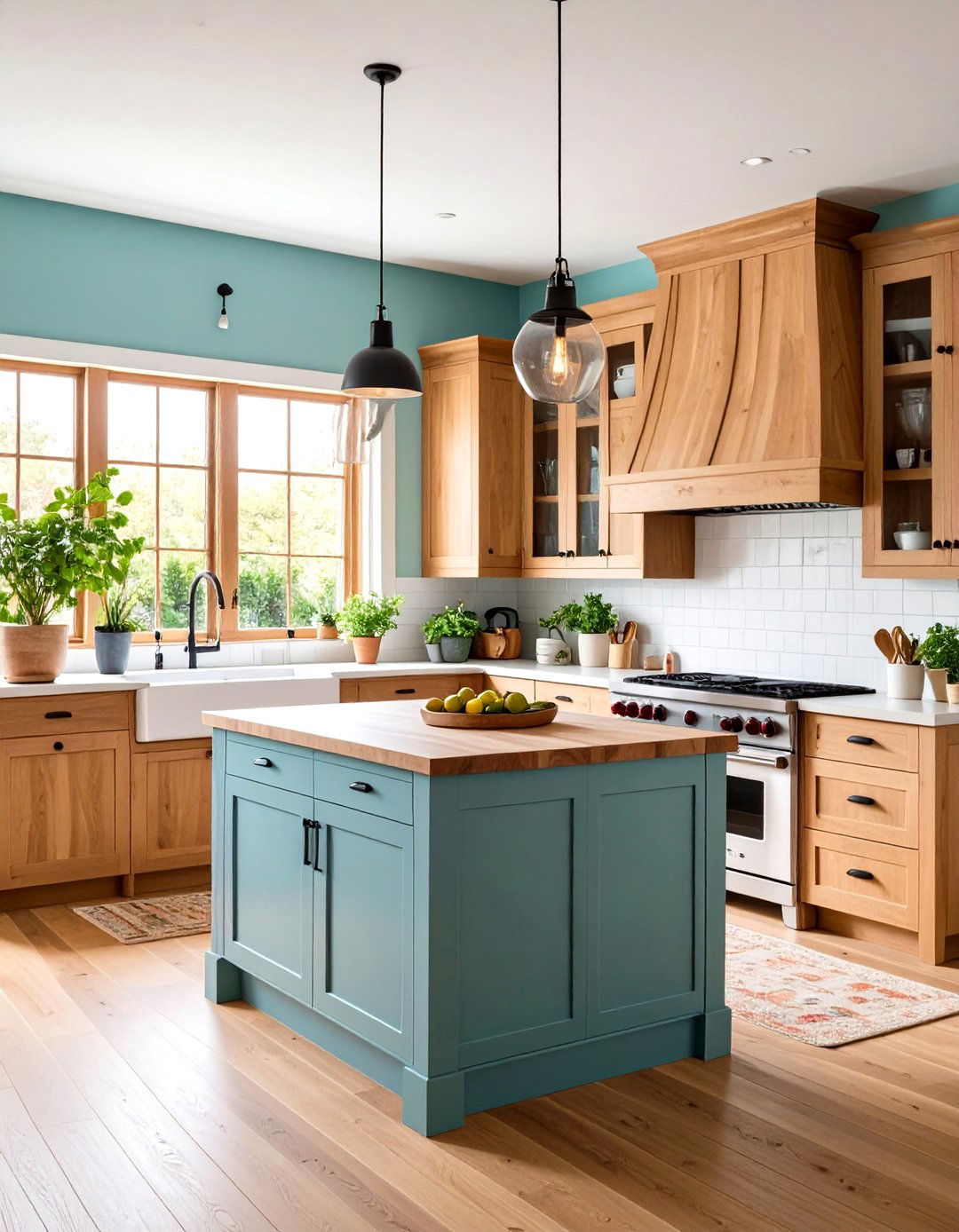
Modern convenience needn’t break the handmade spell. Refrigerators, dishwashers, and warming drawers fitted with custom wood panels disappear behind inset frames, allowing the Craftsman kitchen’s woodwork to read uninterrupted. Seek appliances with simple touch-latch doors so bulky handles don’t interfere with period hardware. Ventilation panels at the toe-kick maintain airflow without visible grilles—ask your cabinetmaker to rout discreet slats. Build future flexibility by ordering two extra panel blanks; they’ll match finish tone if an appliance ever needs replacement. Seamless integration lets technology serve quietly, just as Arts-and-Crafts philosophy intended. Row House Blog Homes & Gardens
Conclusion:
Craftsman kitchens thrive on honest materials, thoughtfully revealed joinery, and design decisions that make daily rituals feel grounded and gracious. Whether you commit to quarter-sawn oak cabinets or simply swap in an amber-mica pendant, each idea above ties back to the same core promise: practical beauty built to last. By favoring natural textures, investing in artisanal touches, and hiding technology behind wood panels, you’ll craft a space that welcomes generations of cooks while quietly honoring the timeless values of the Arts-and-Crafts movement.


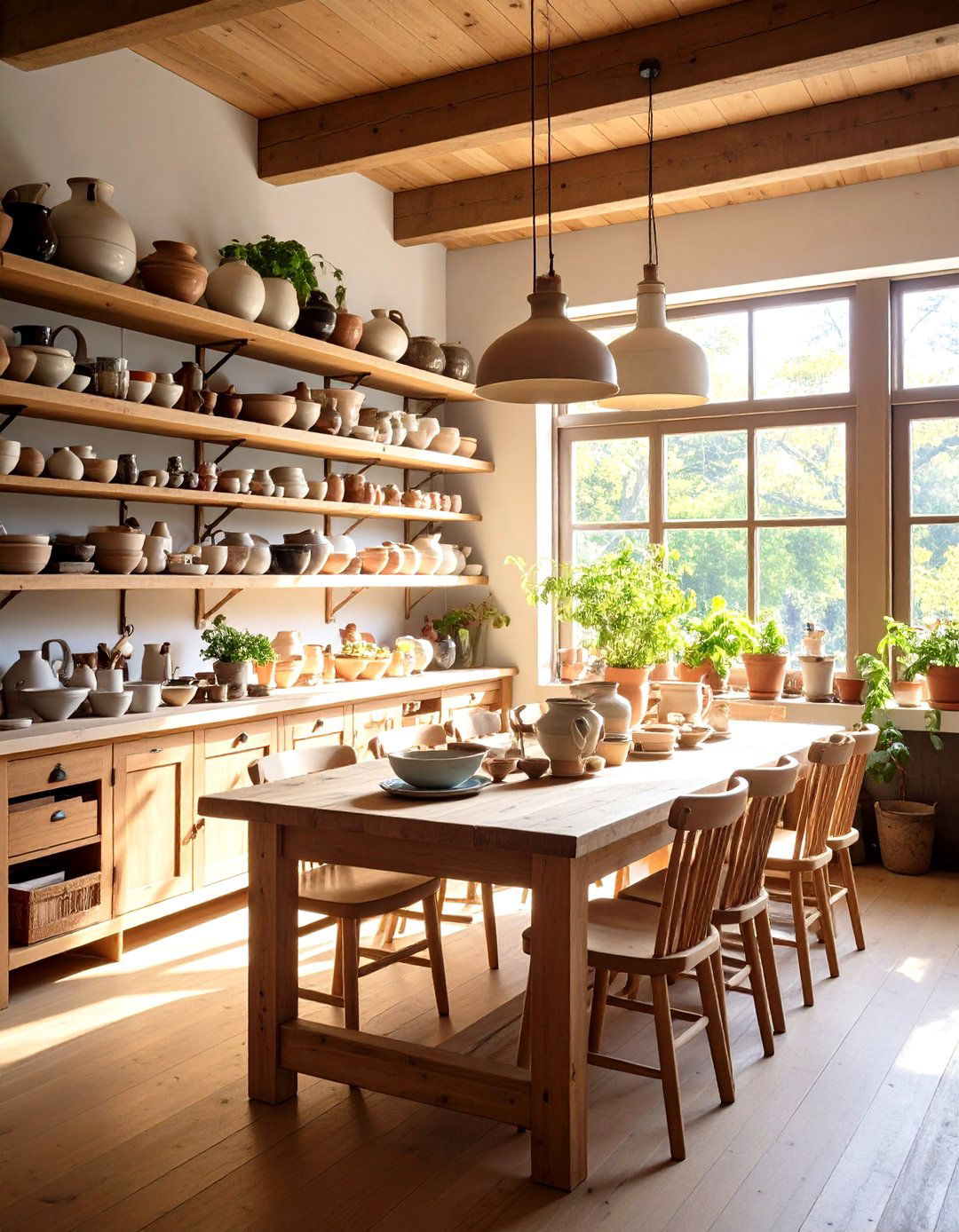
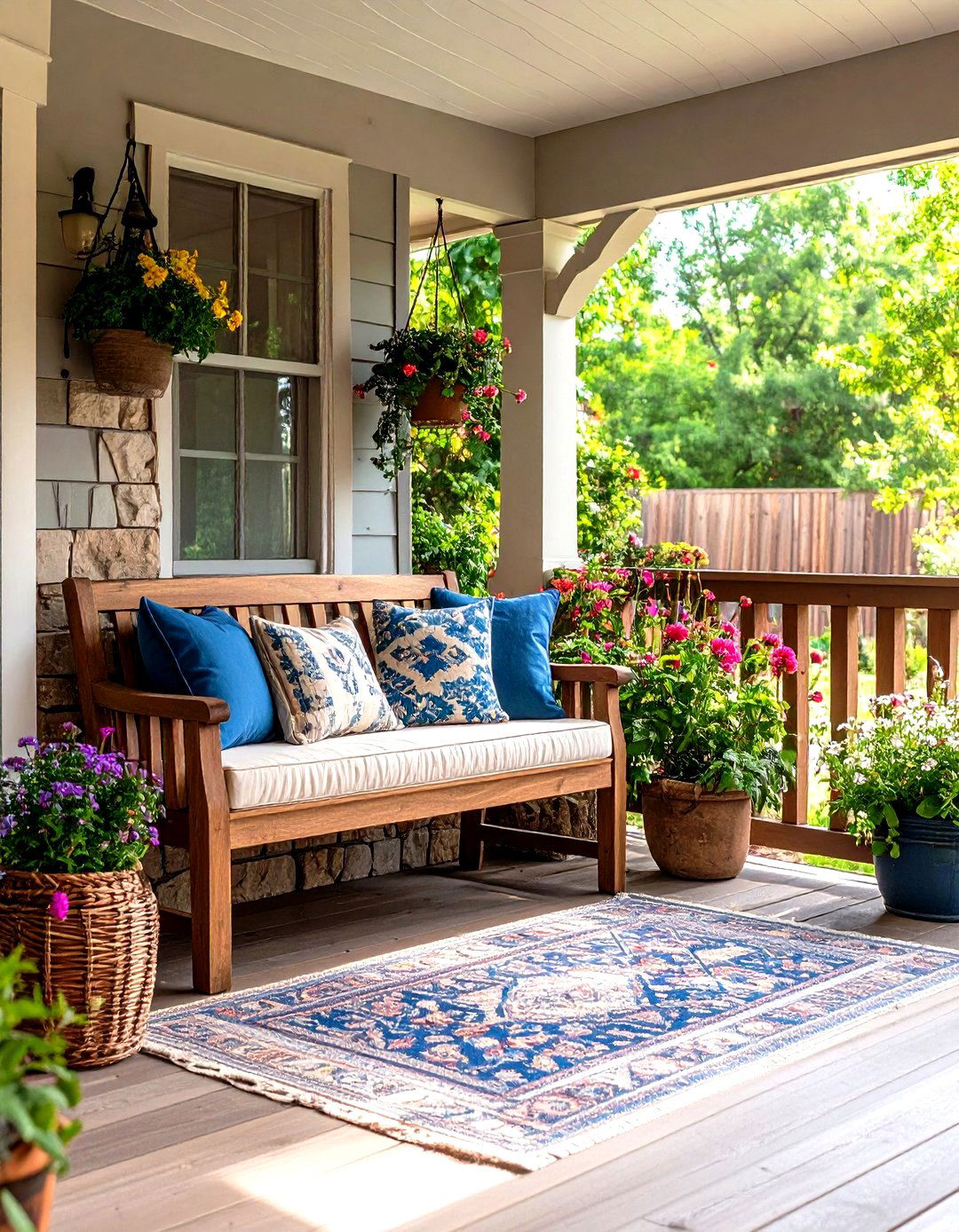
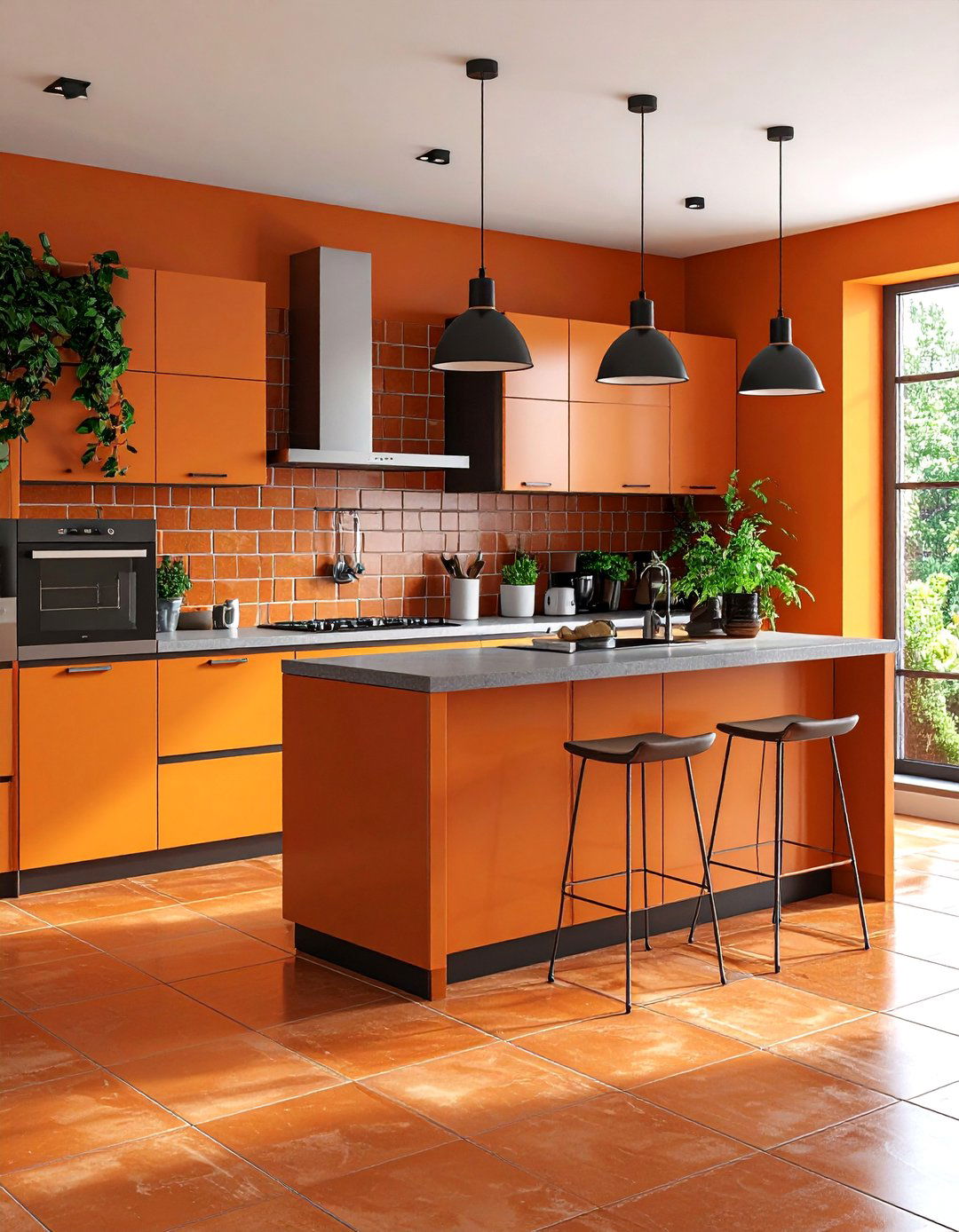
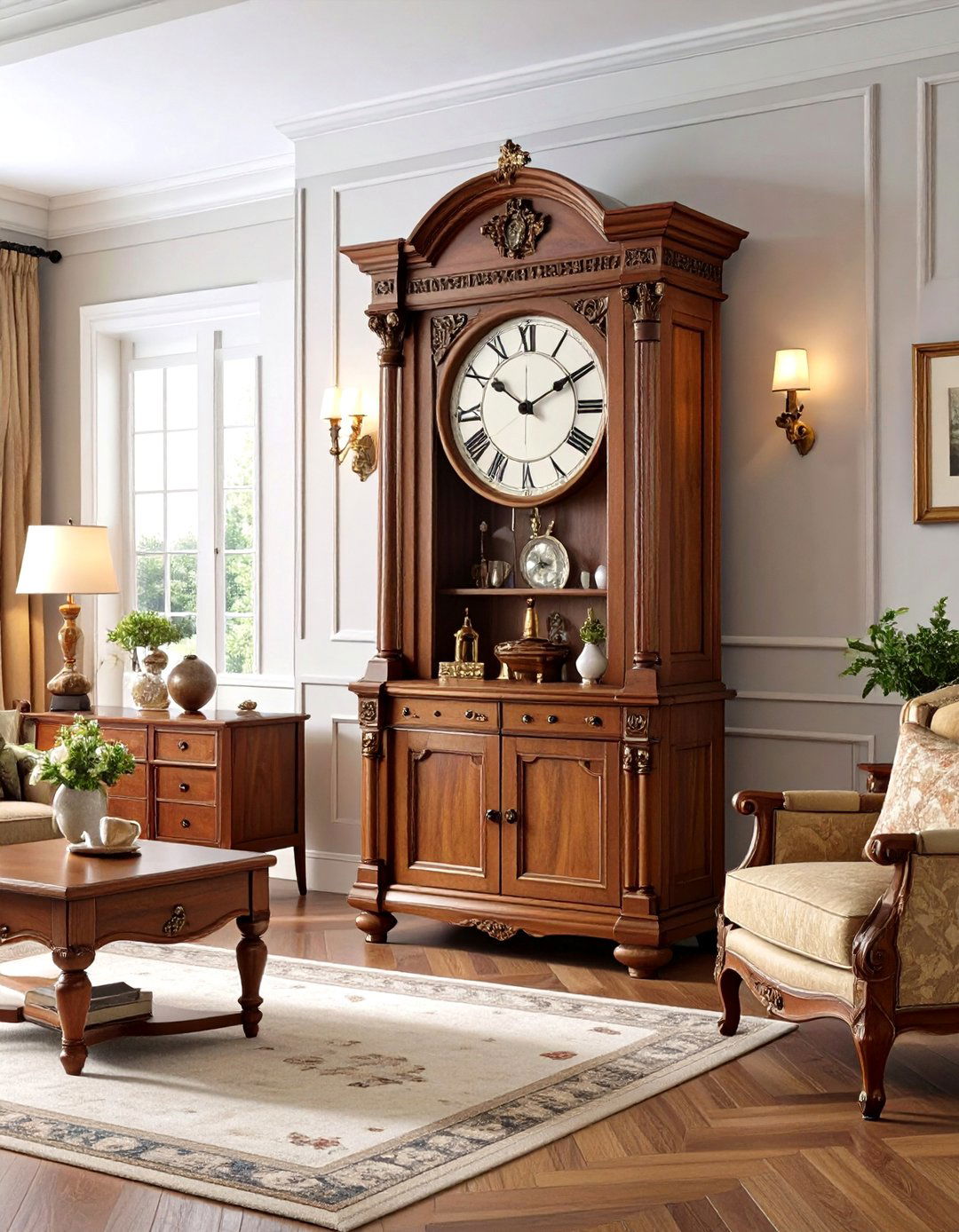
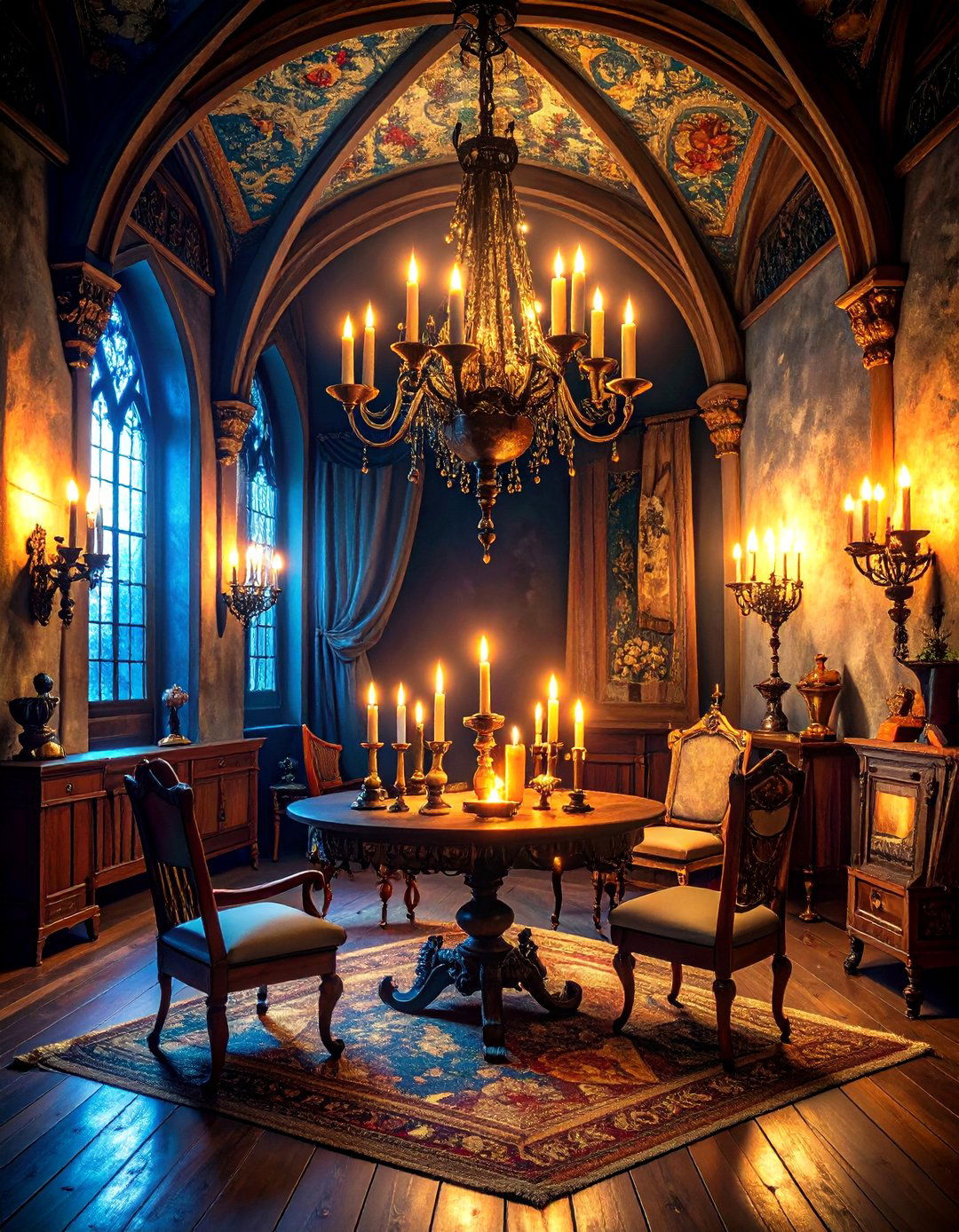
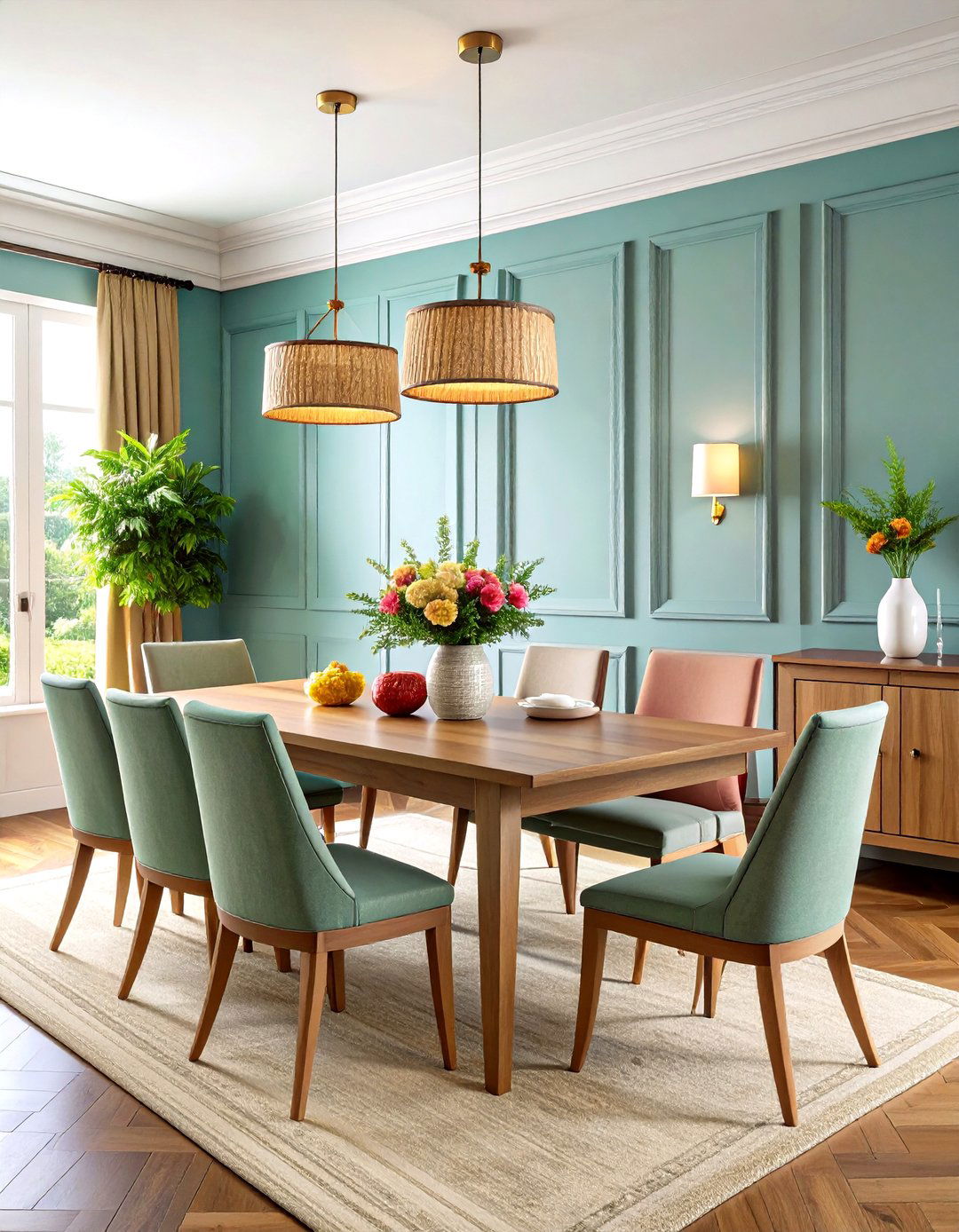
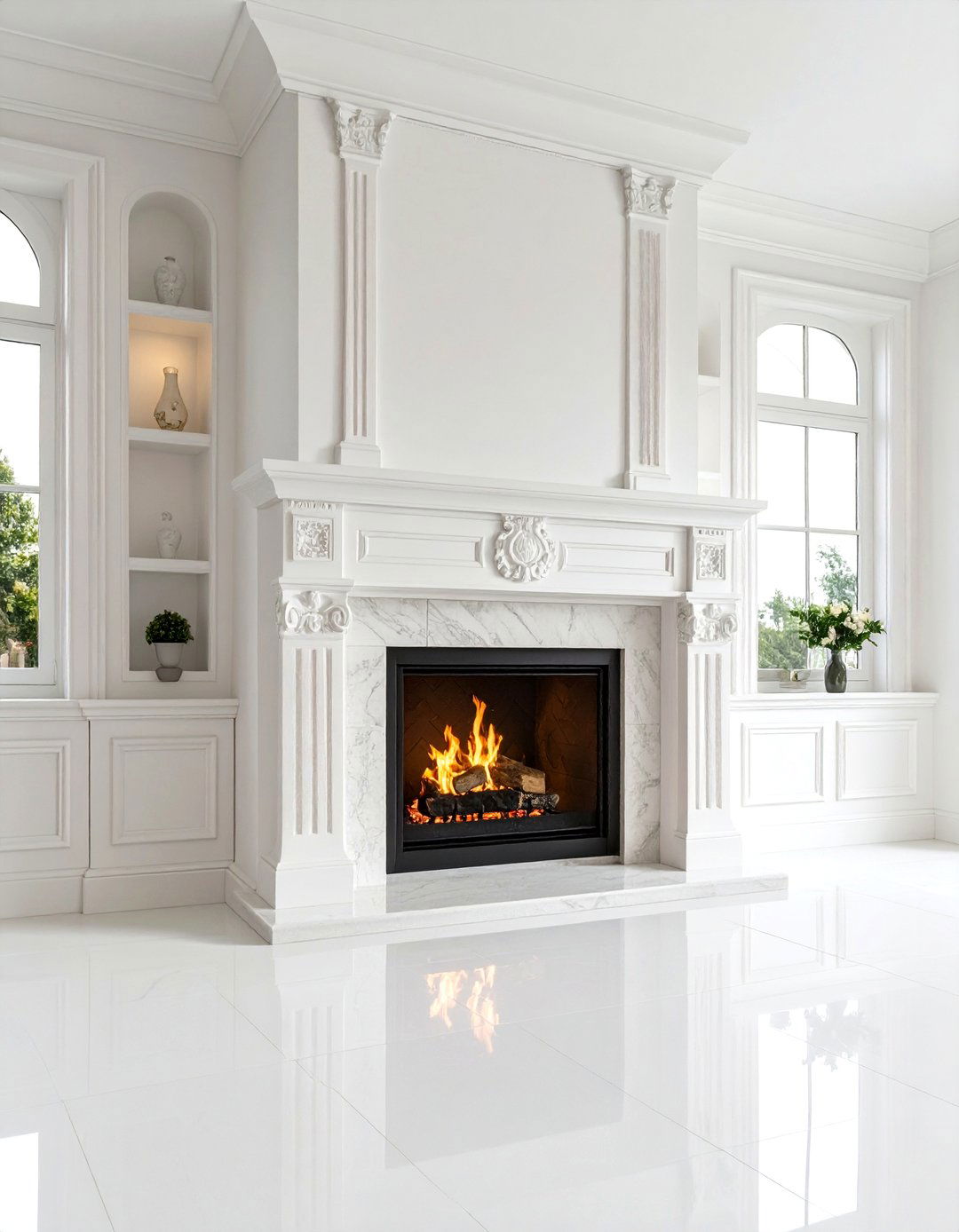
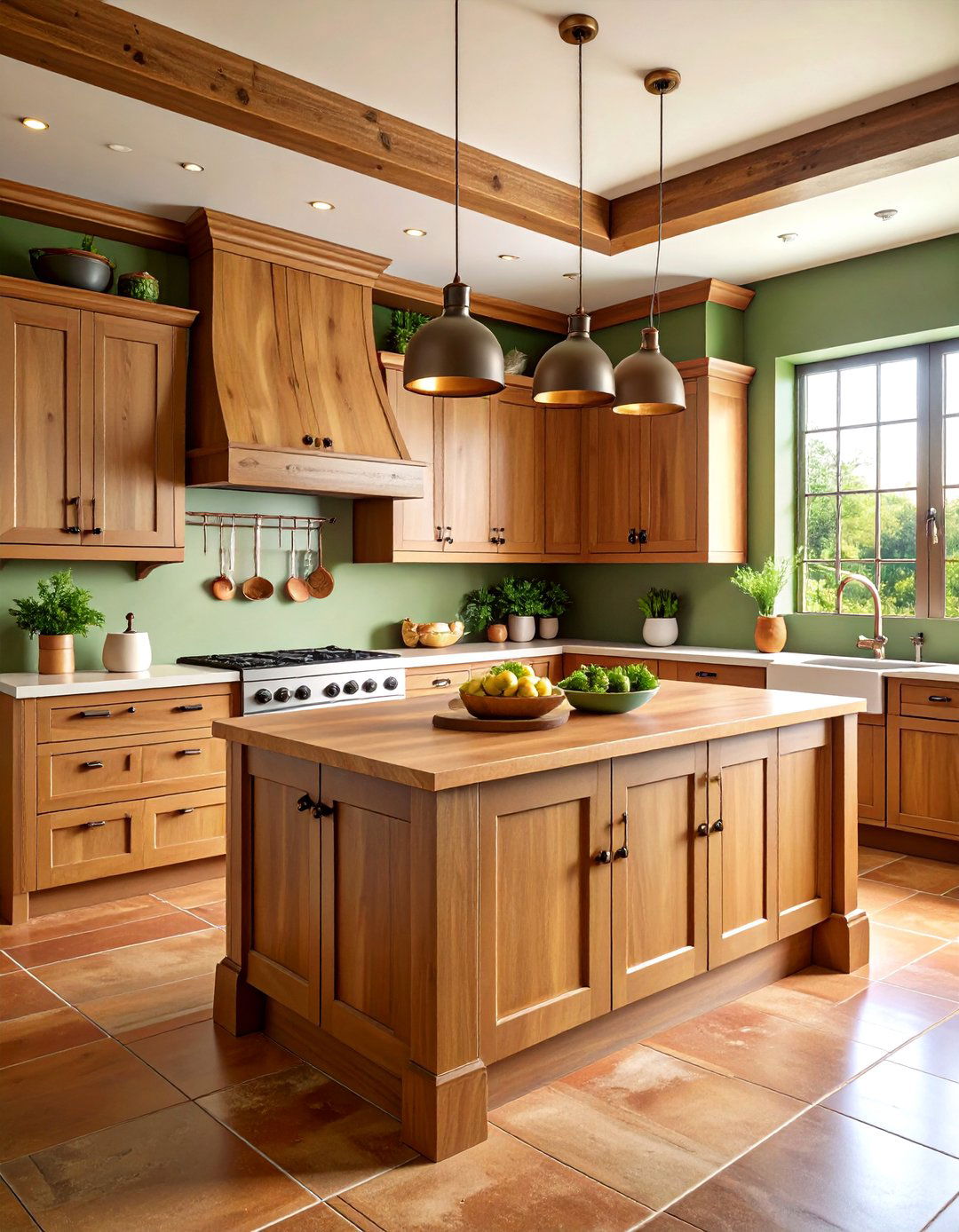
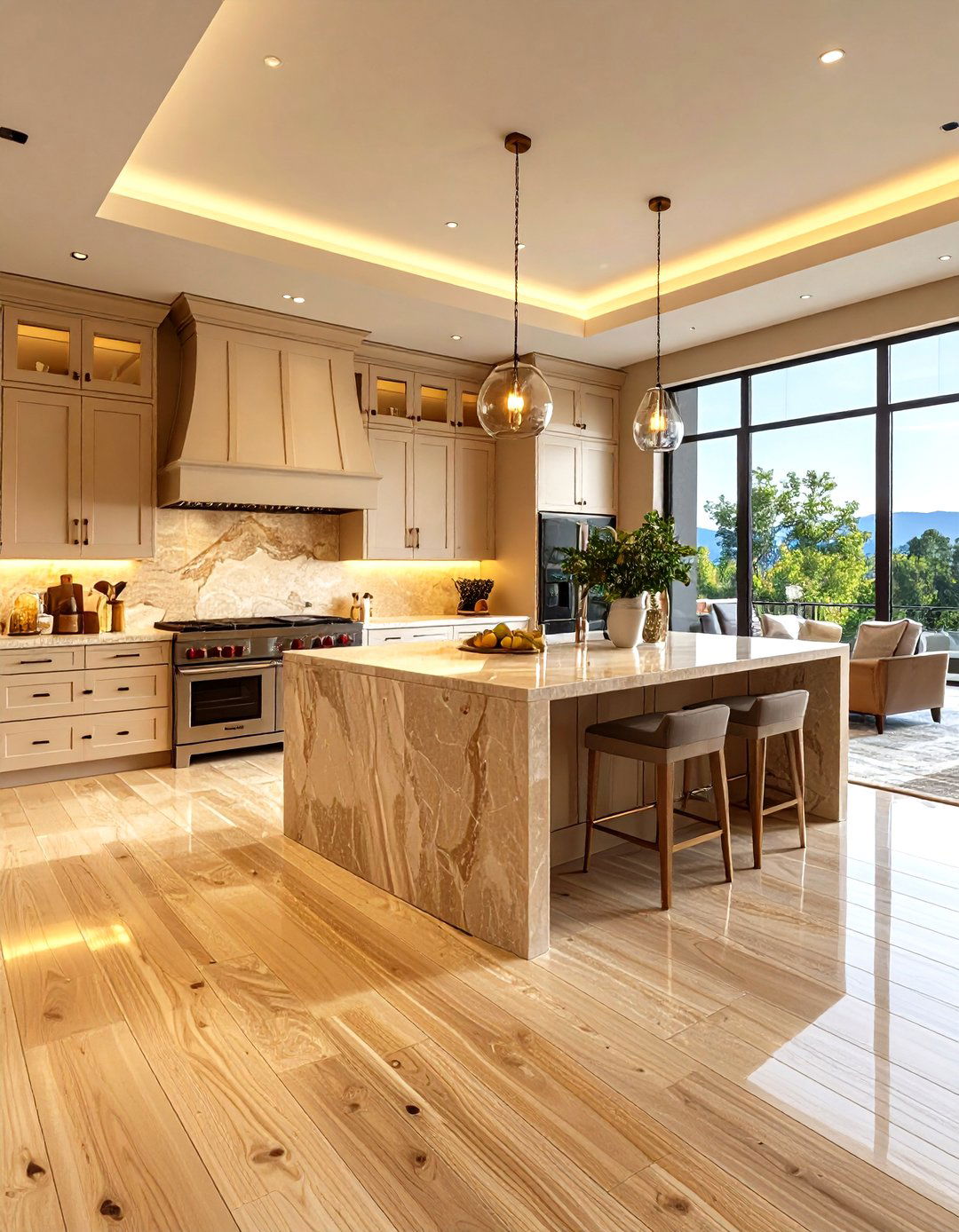
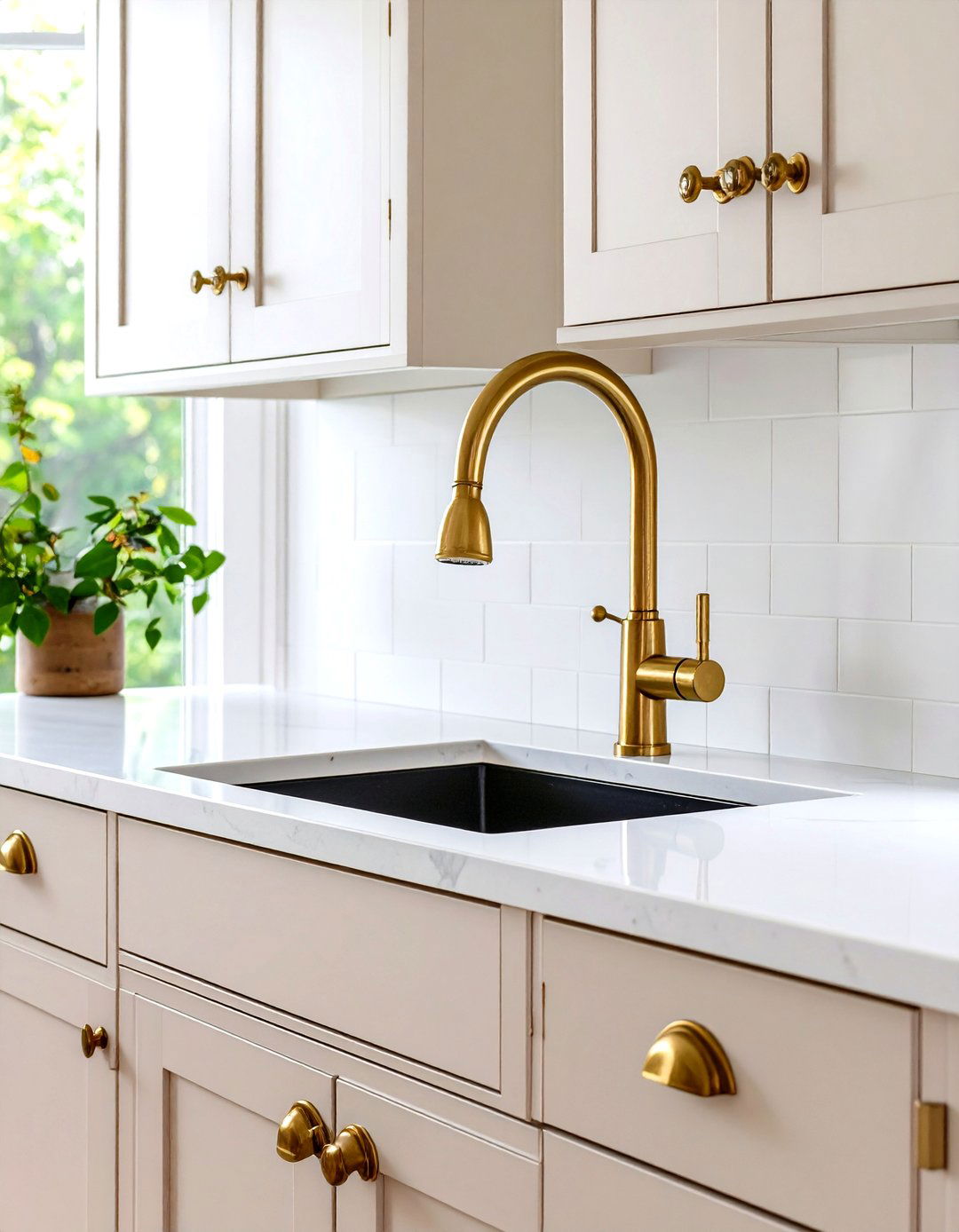
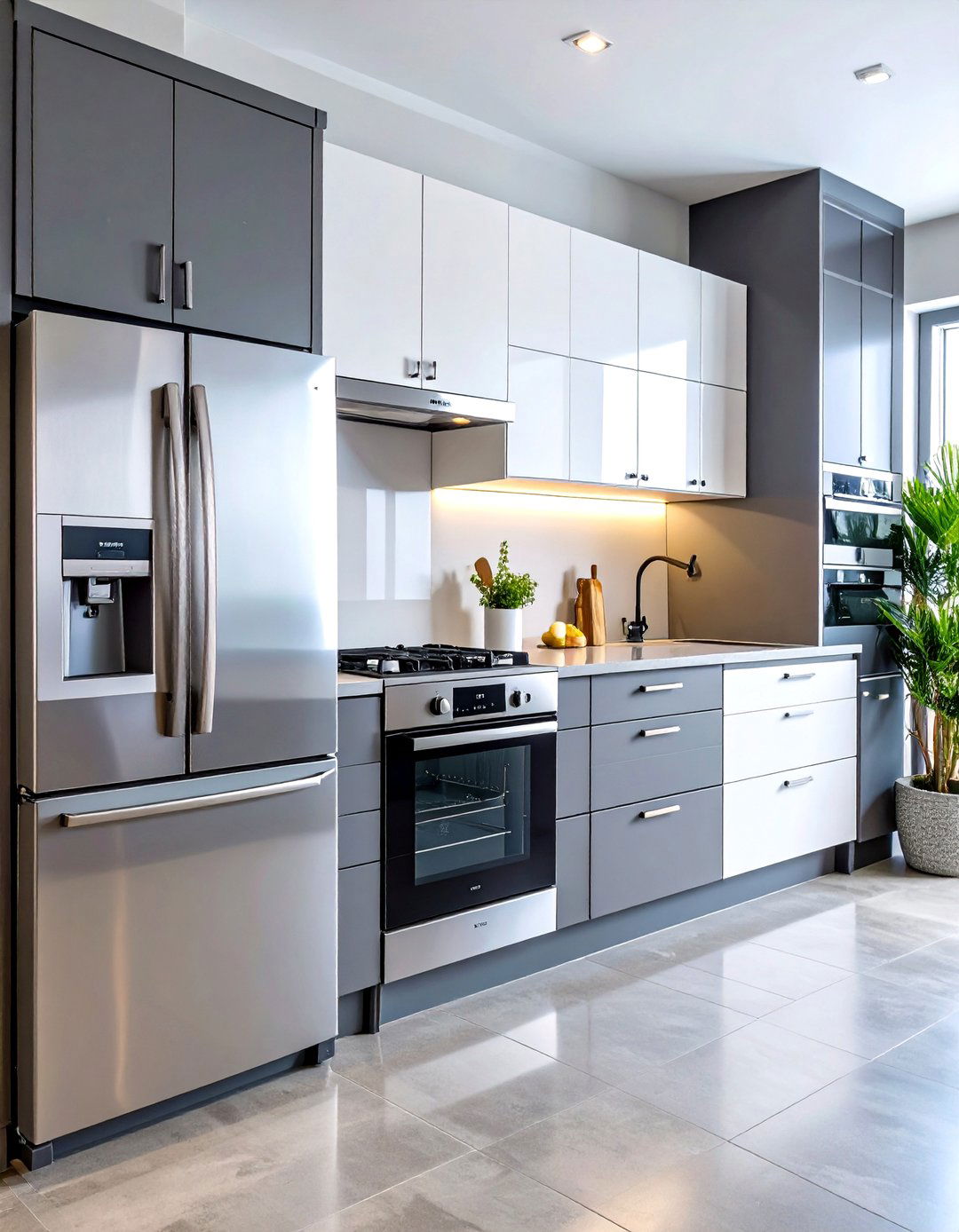
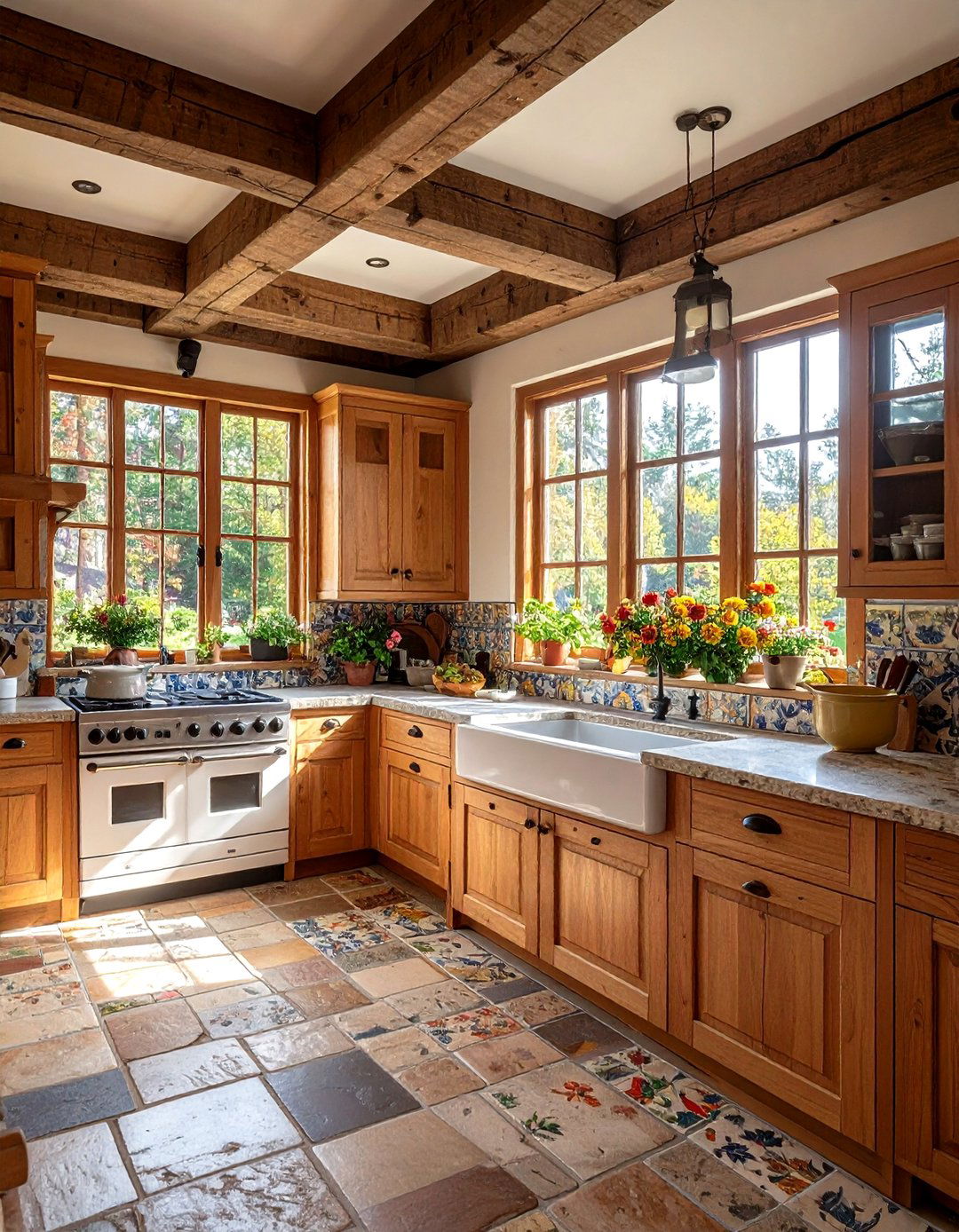
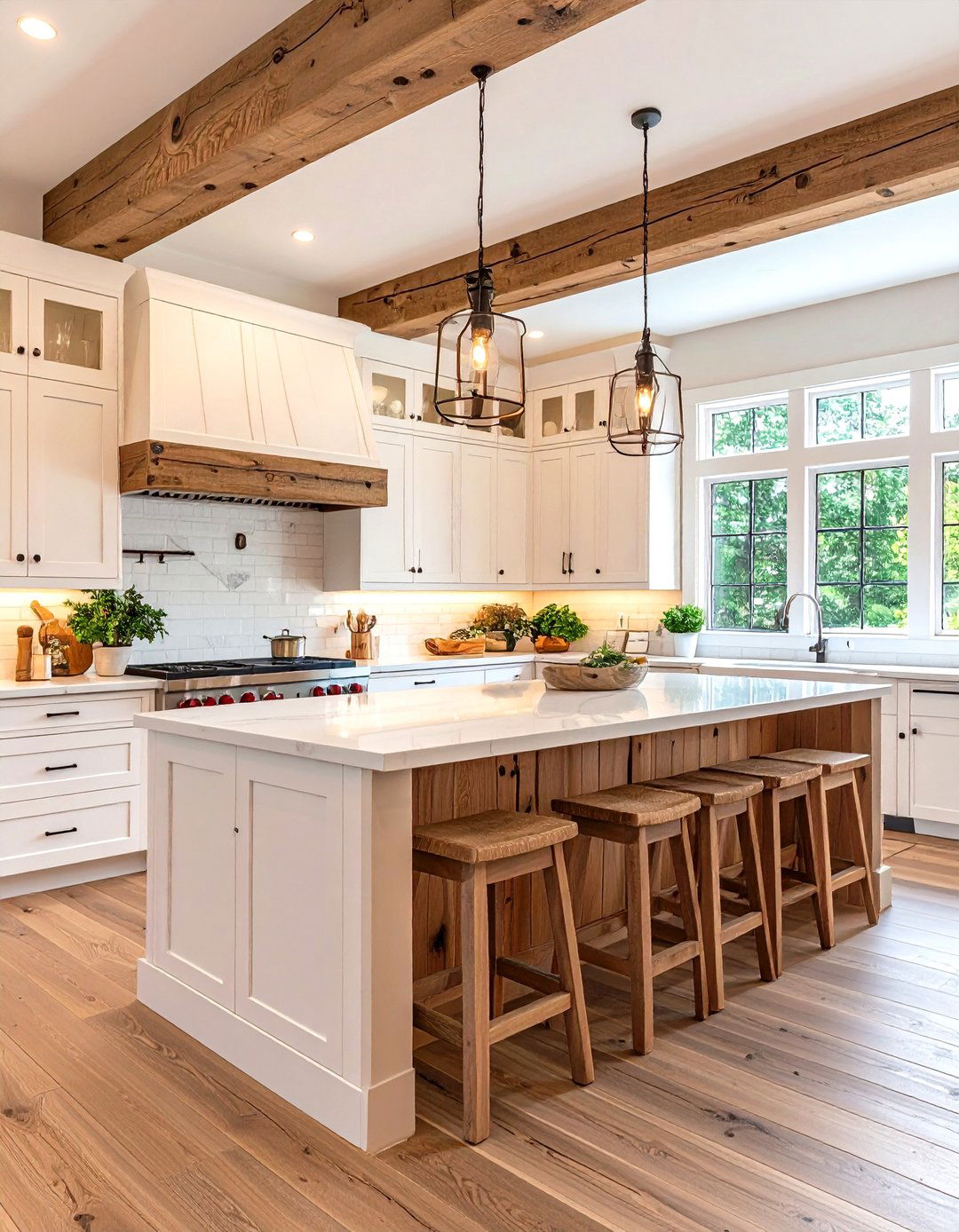
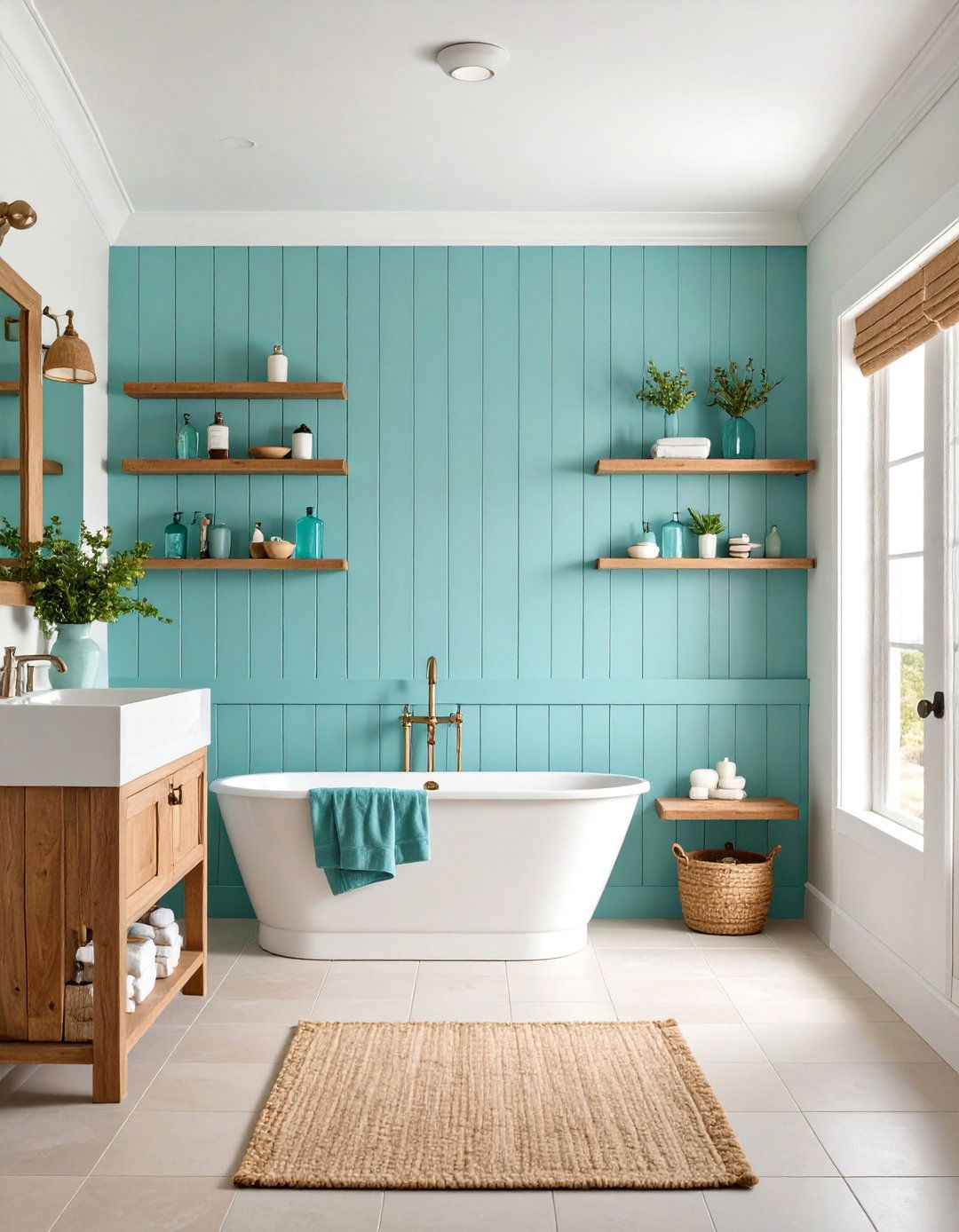
Leave a Reply